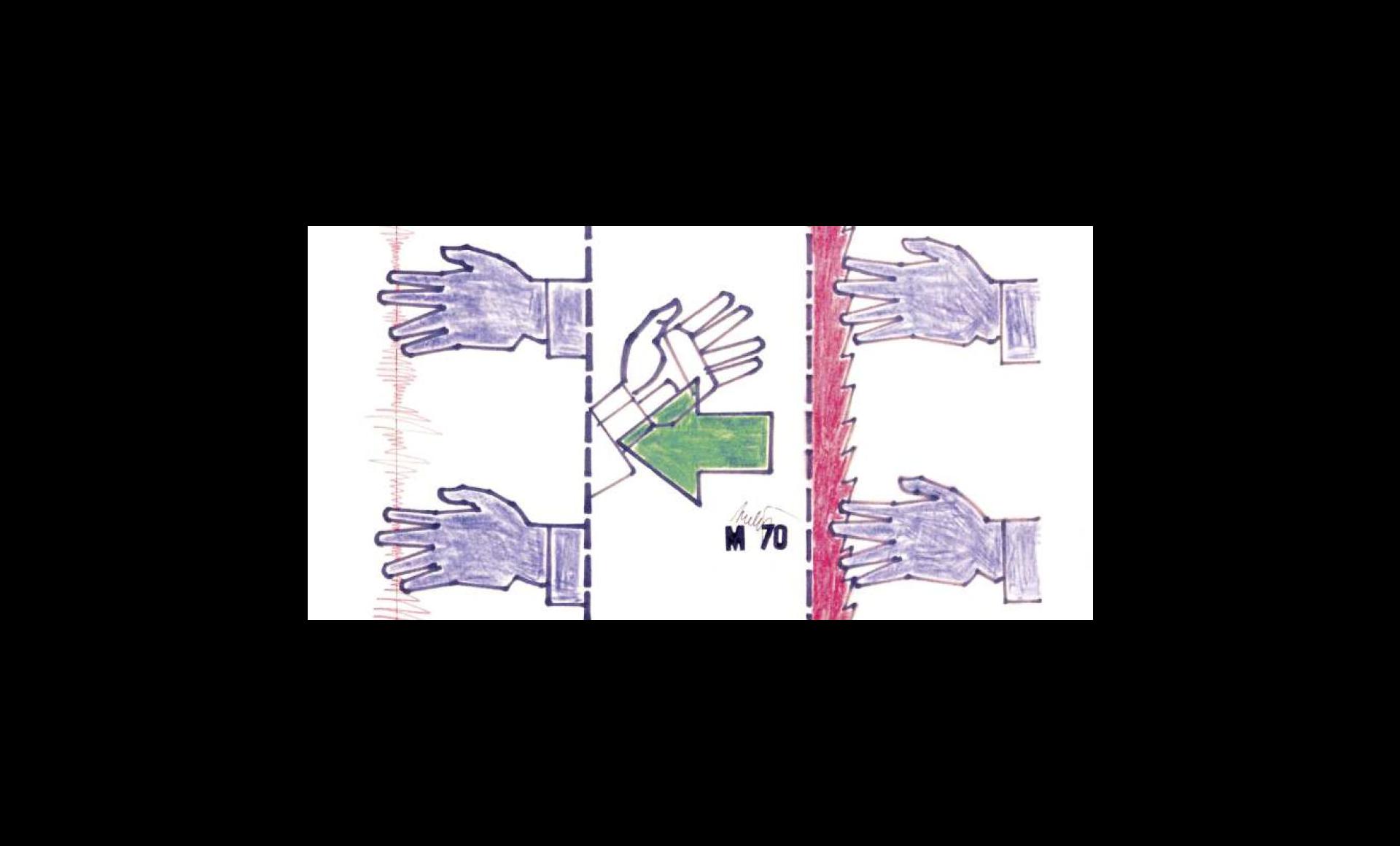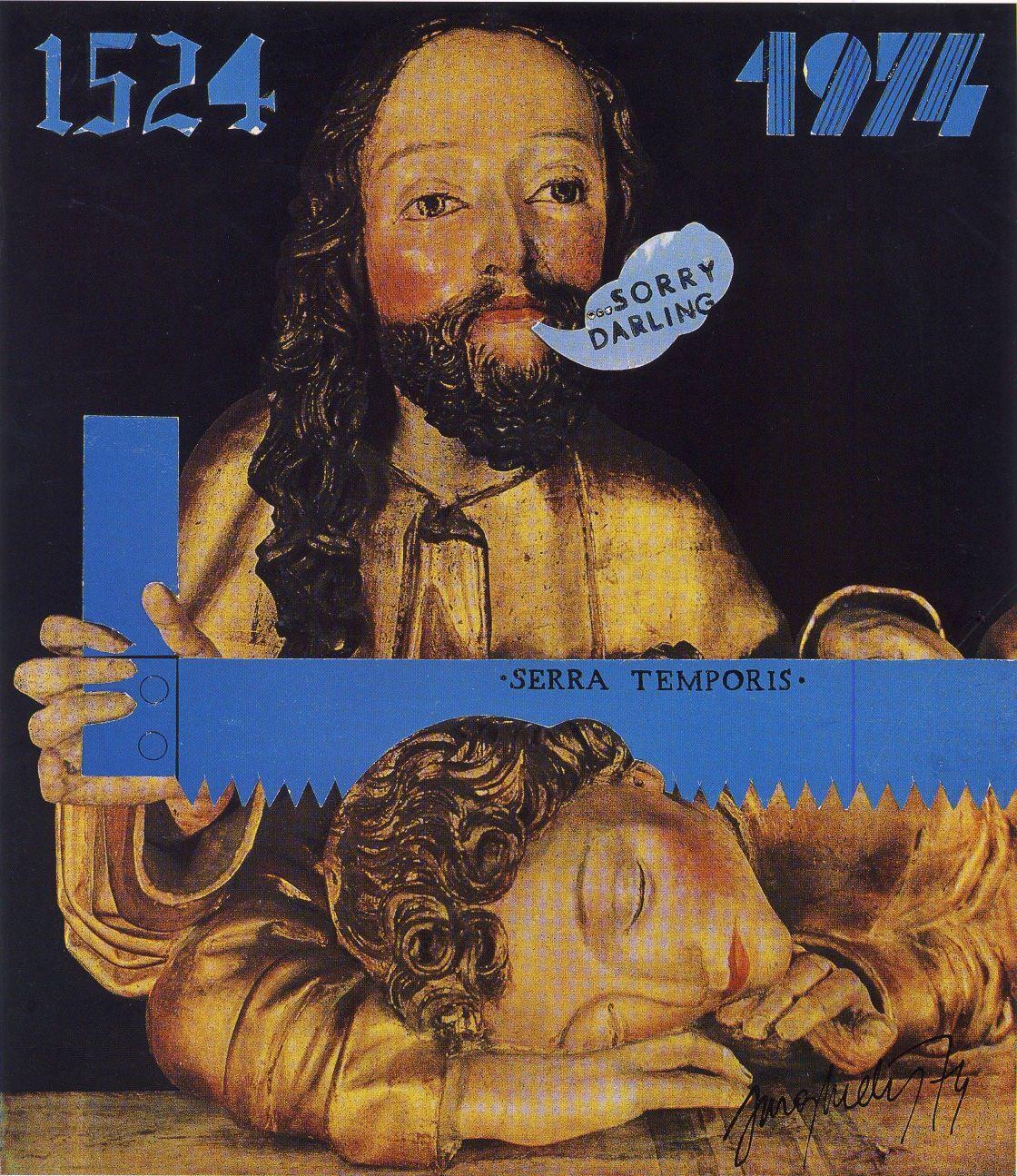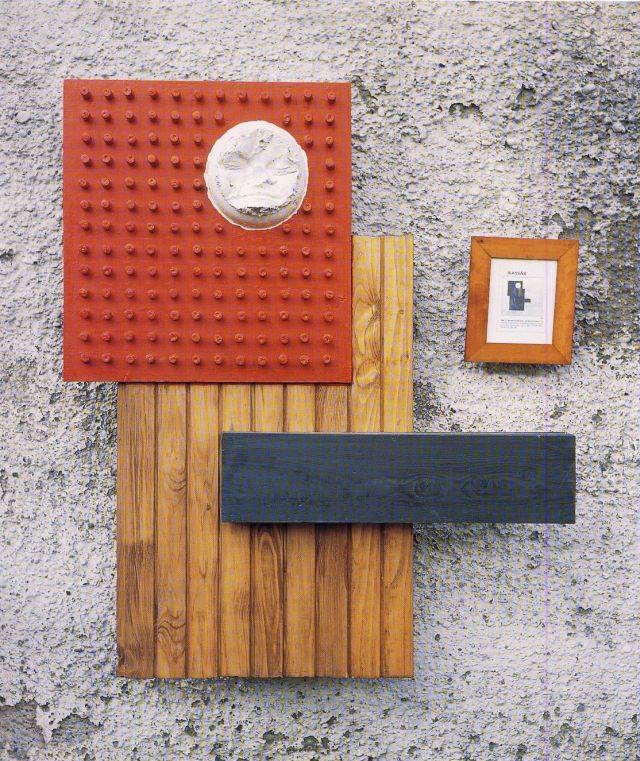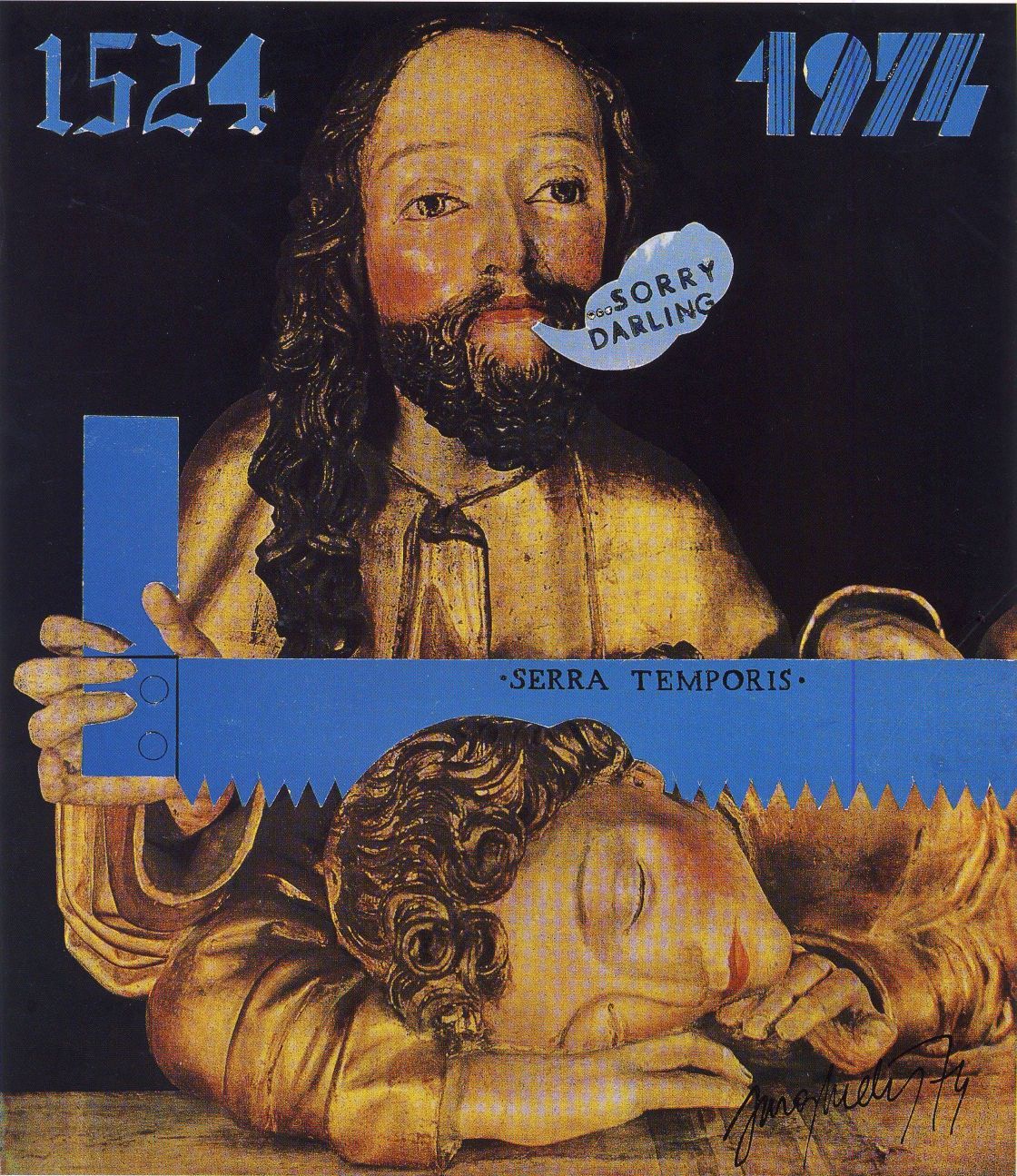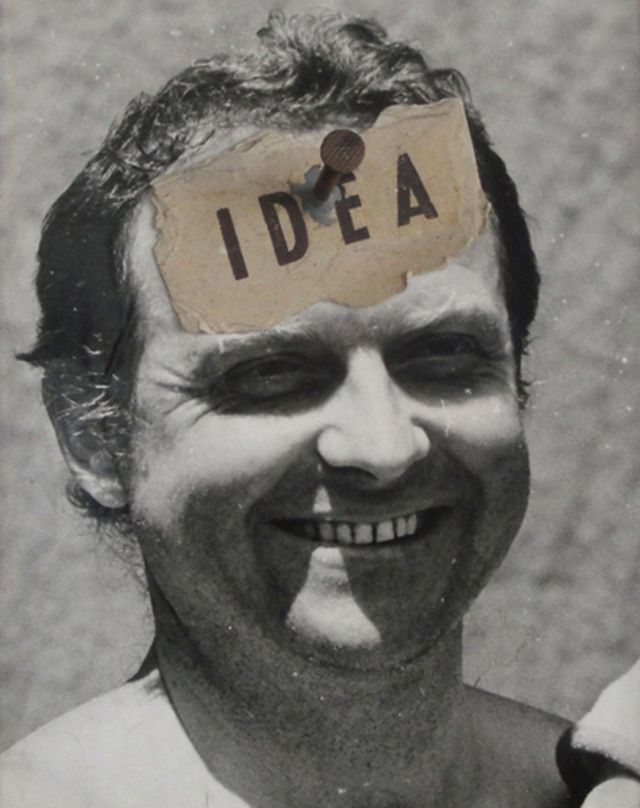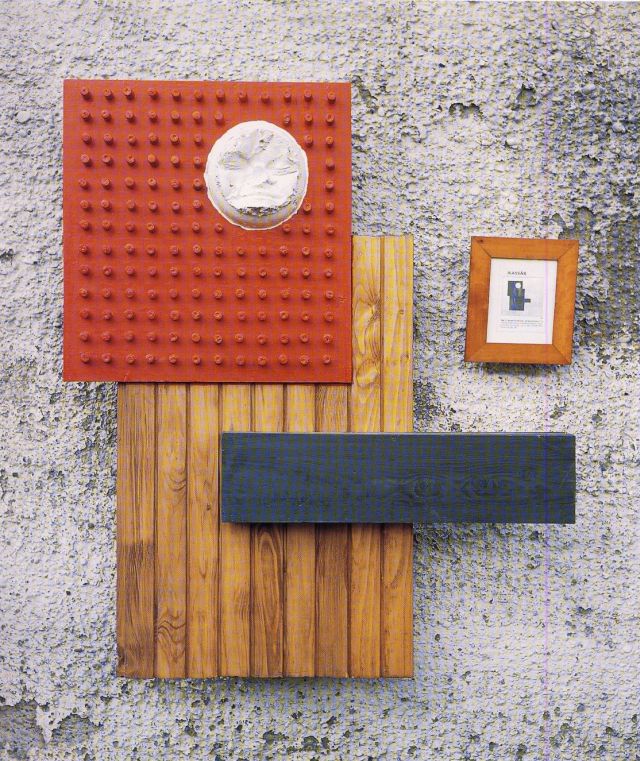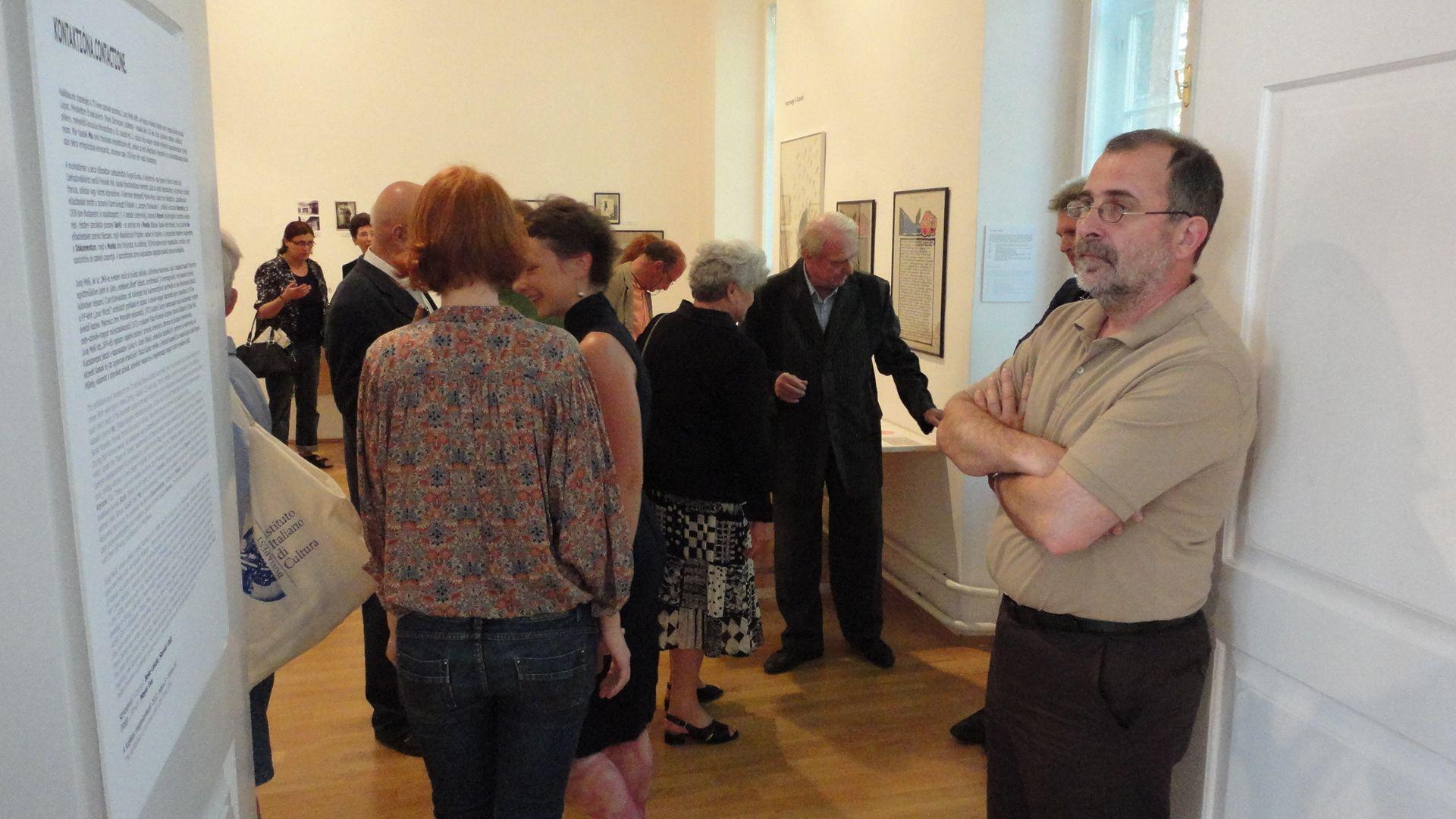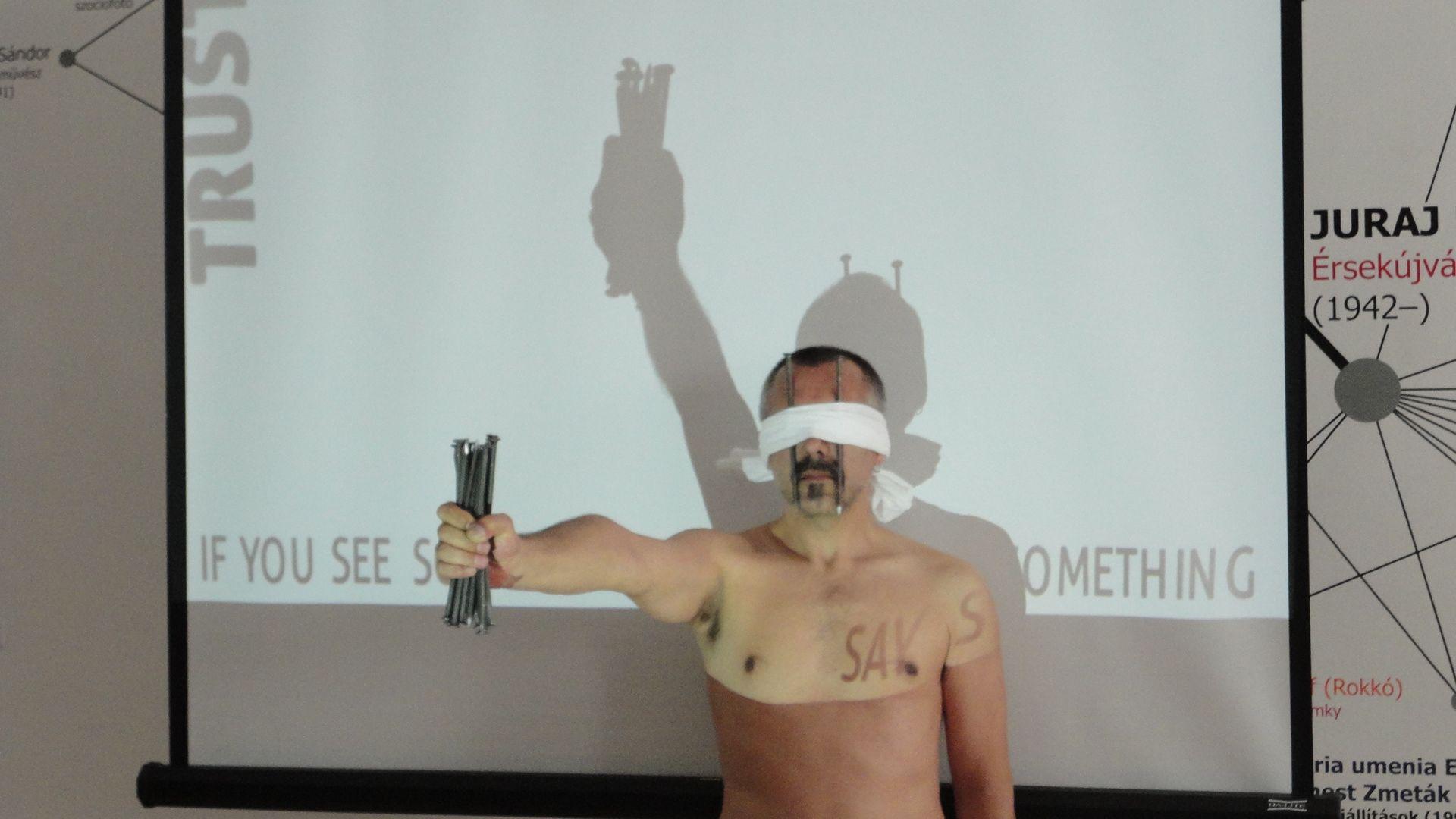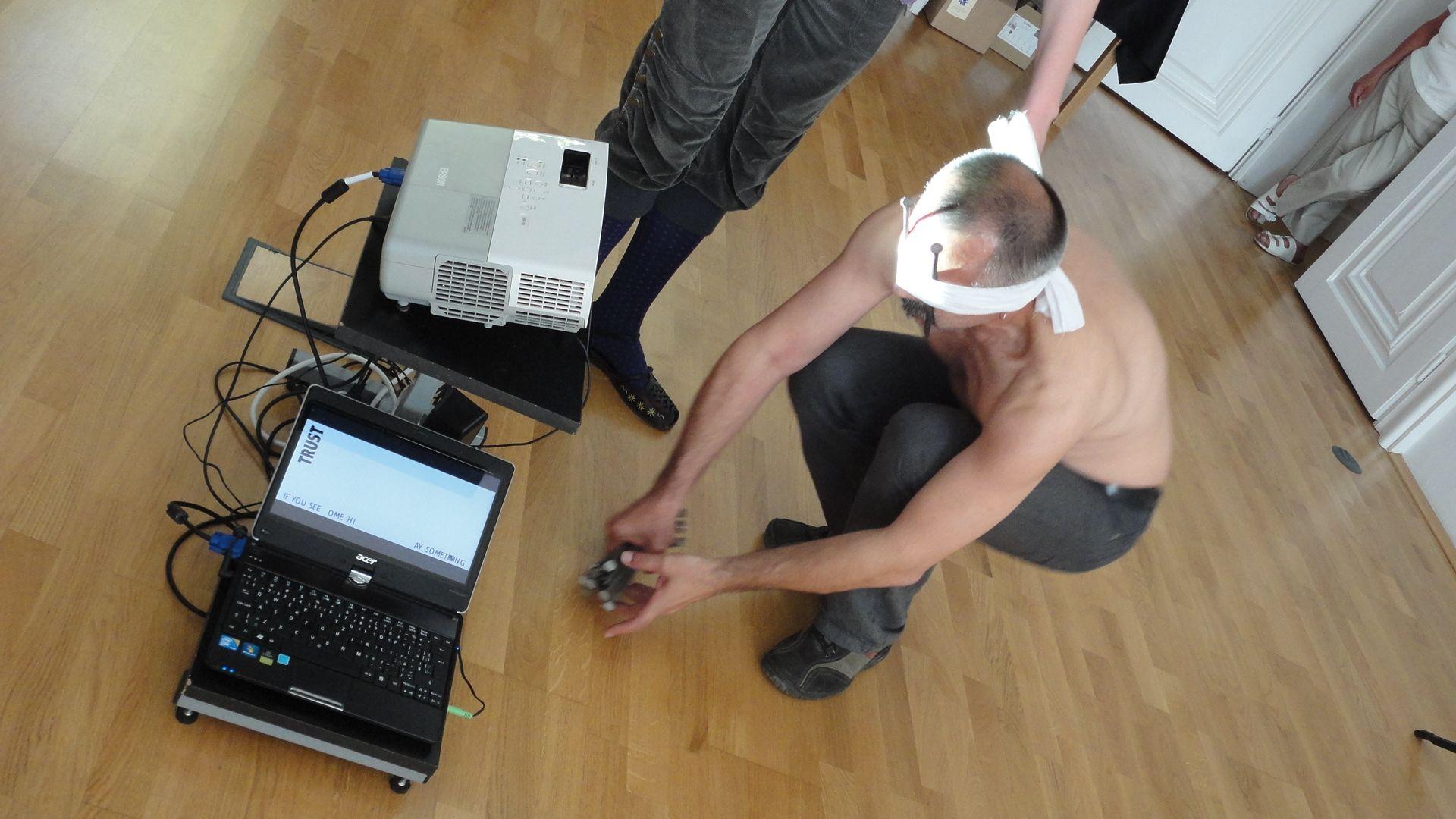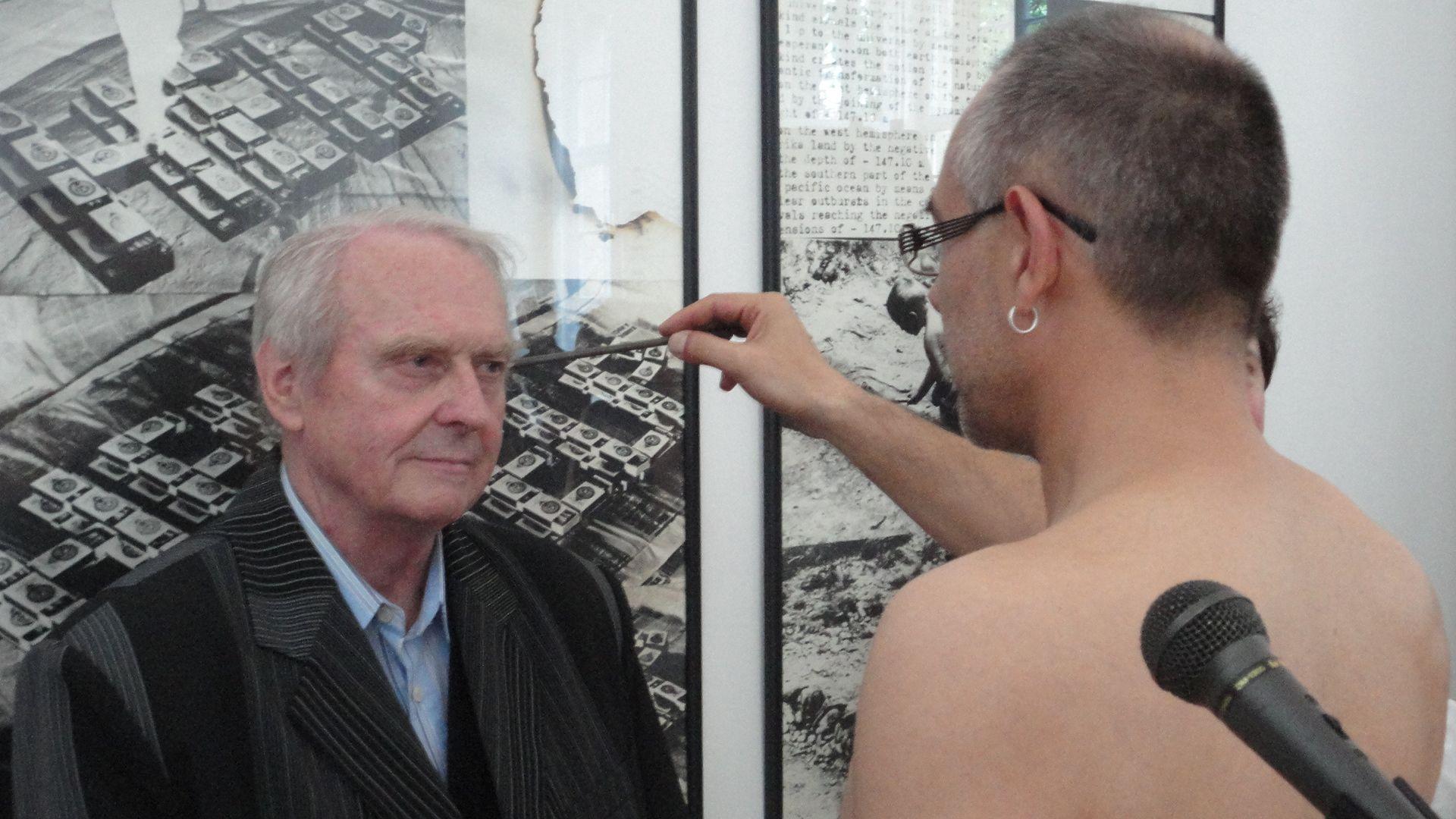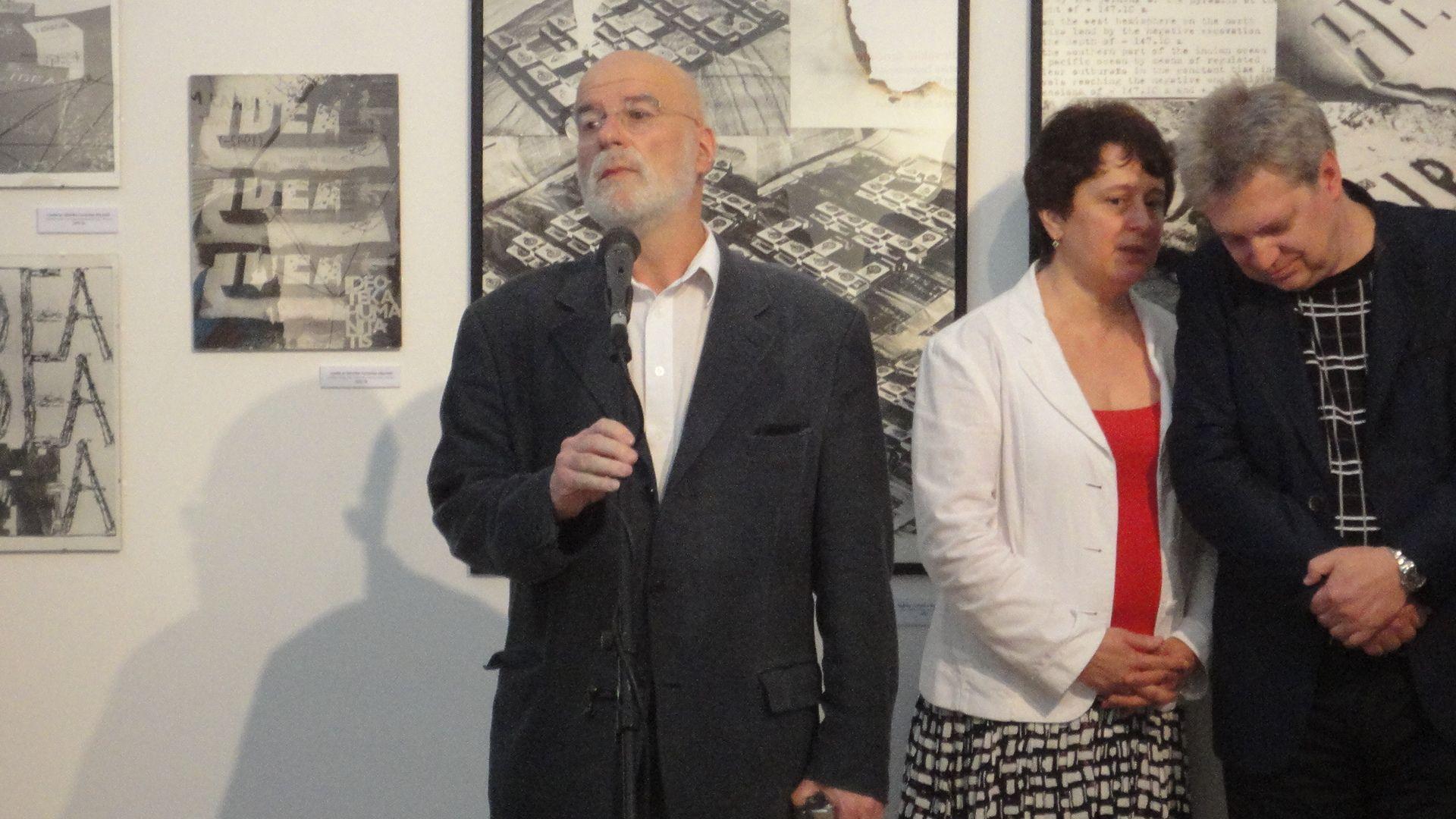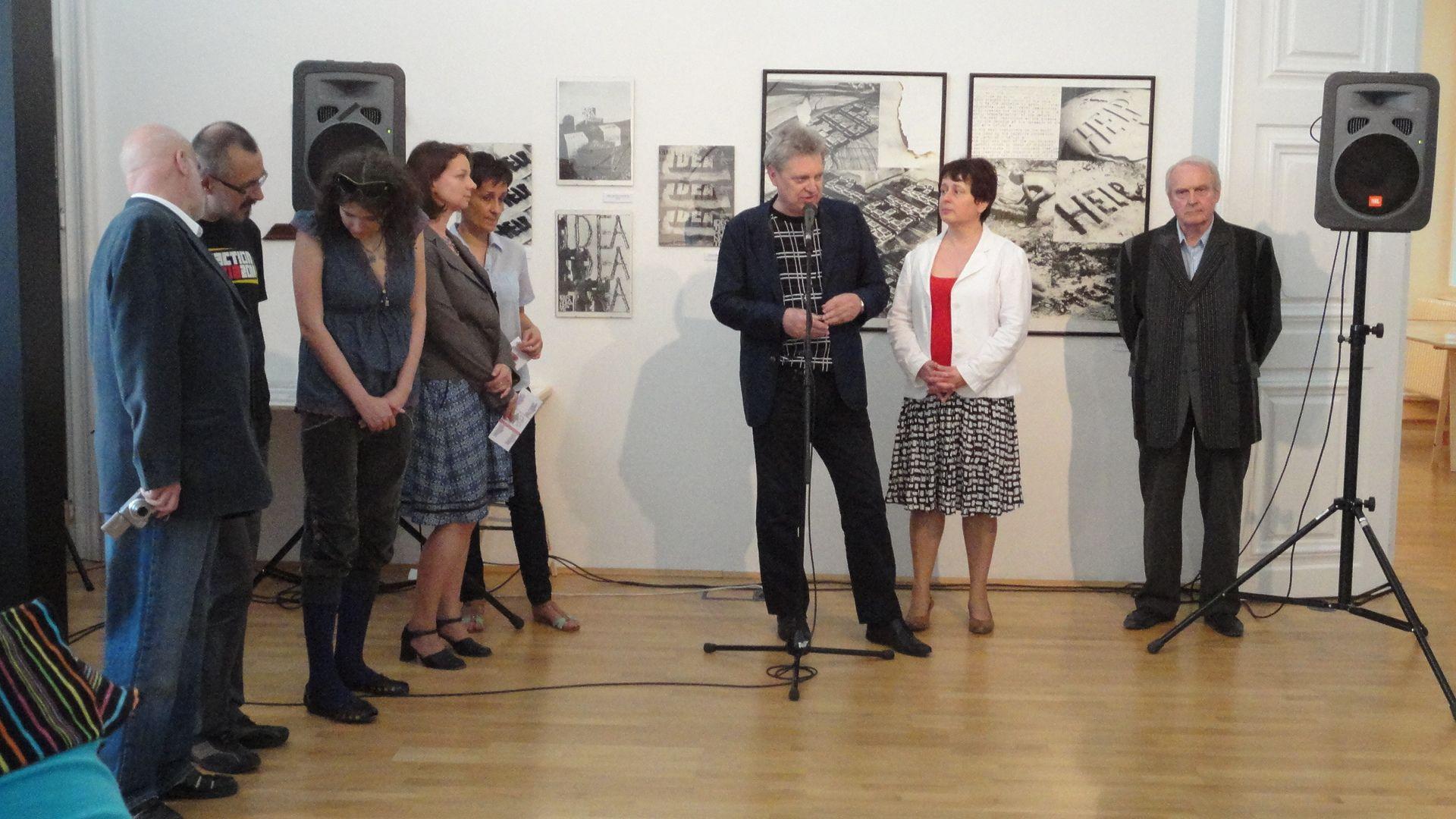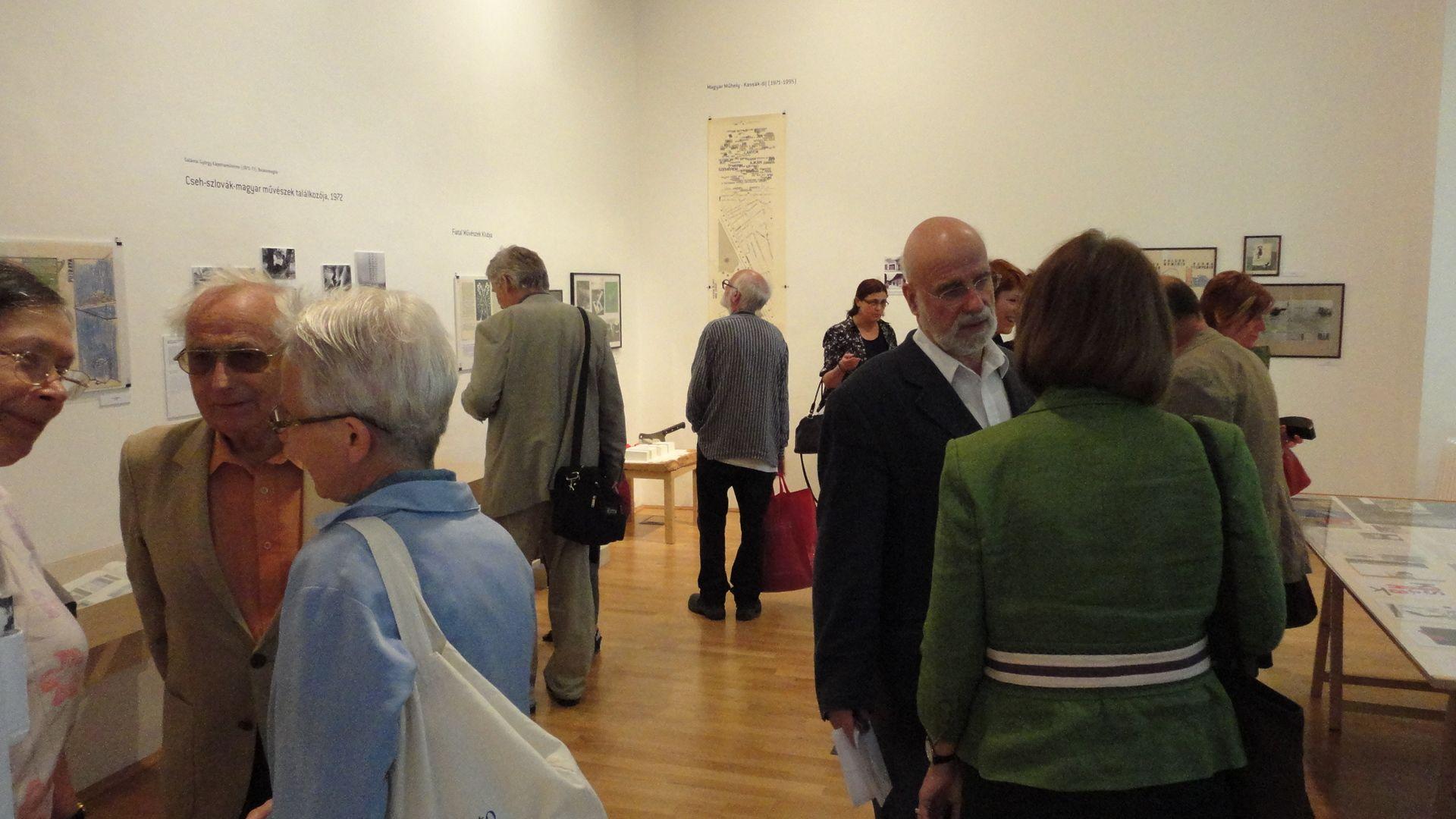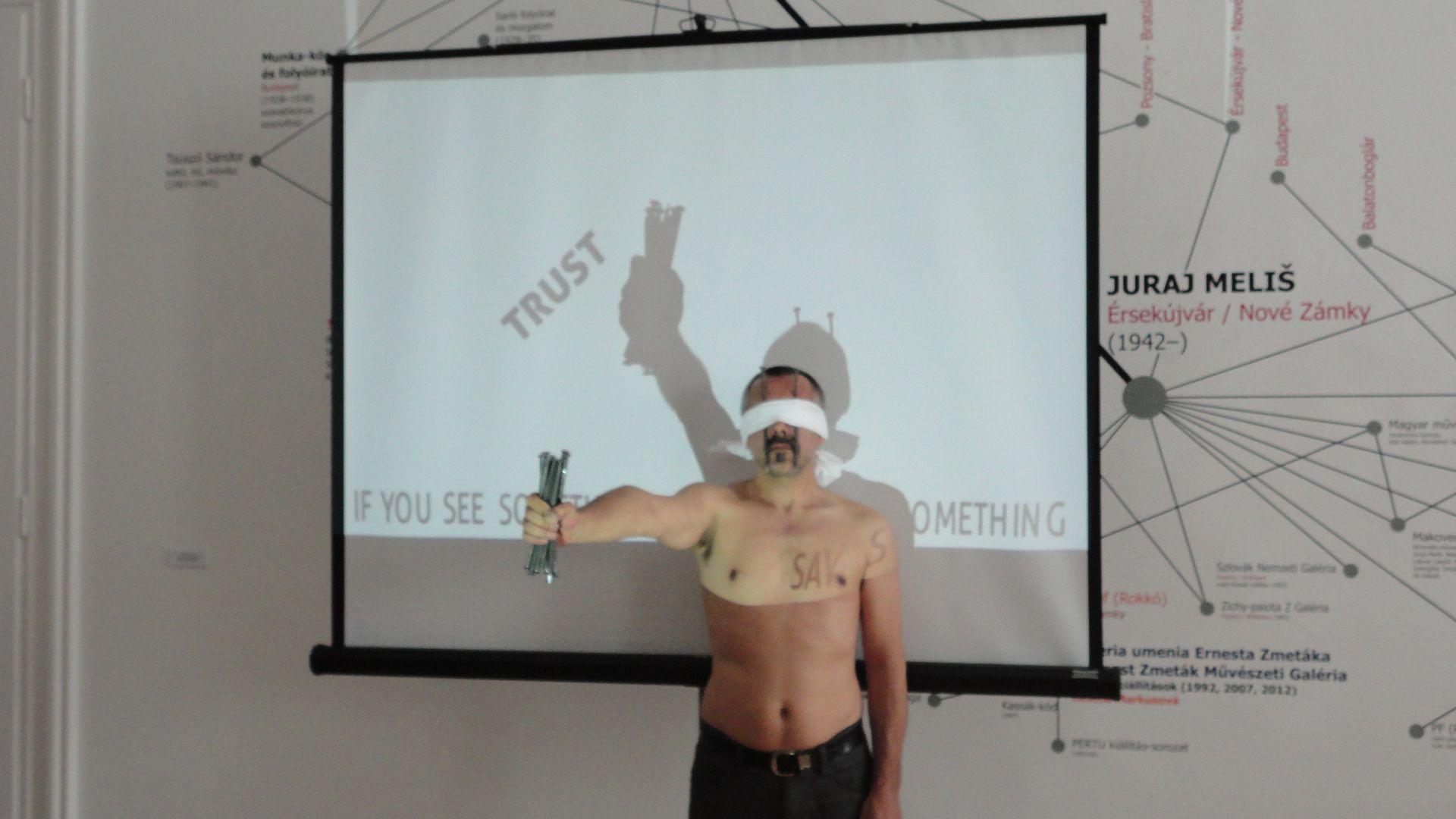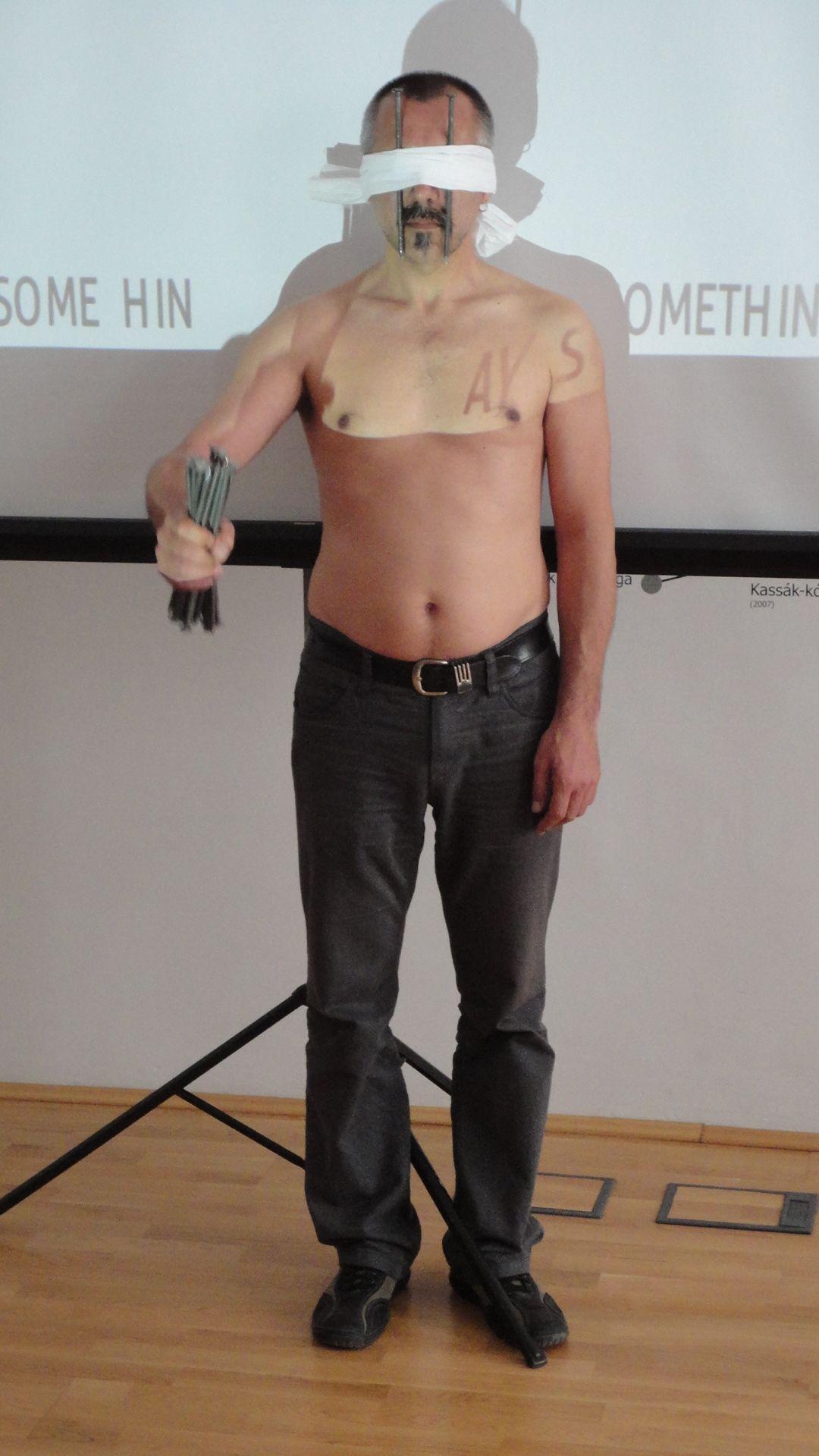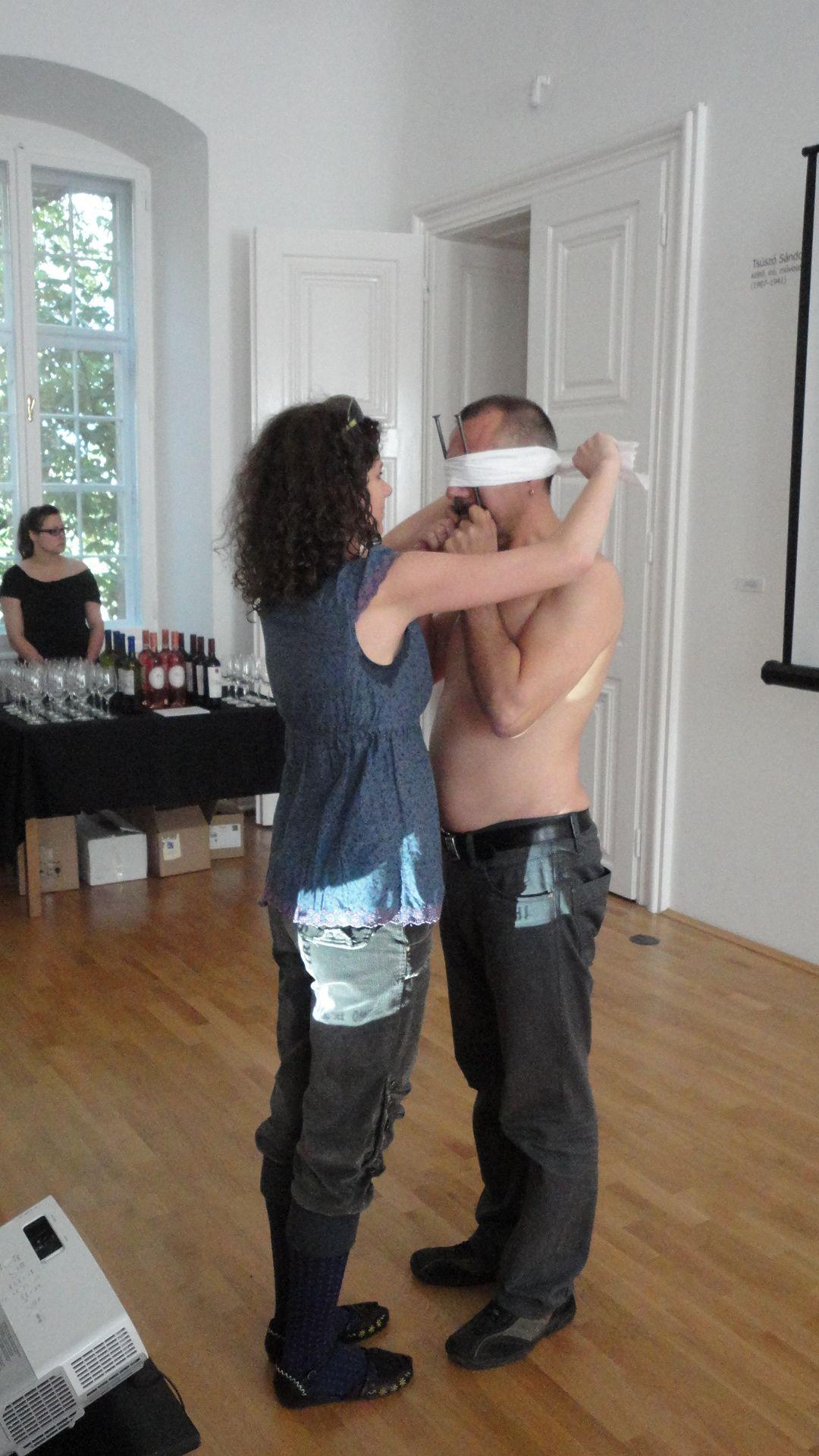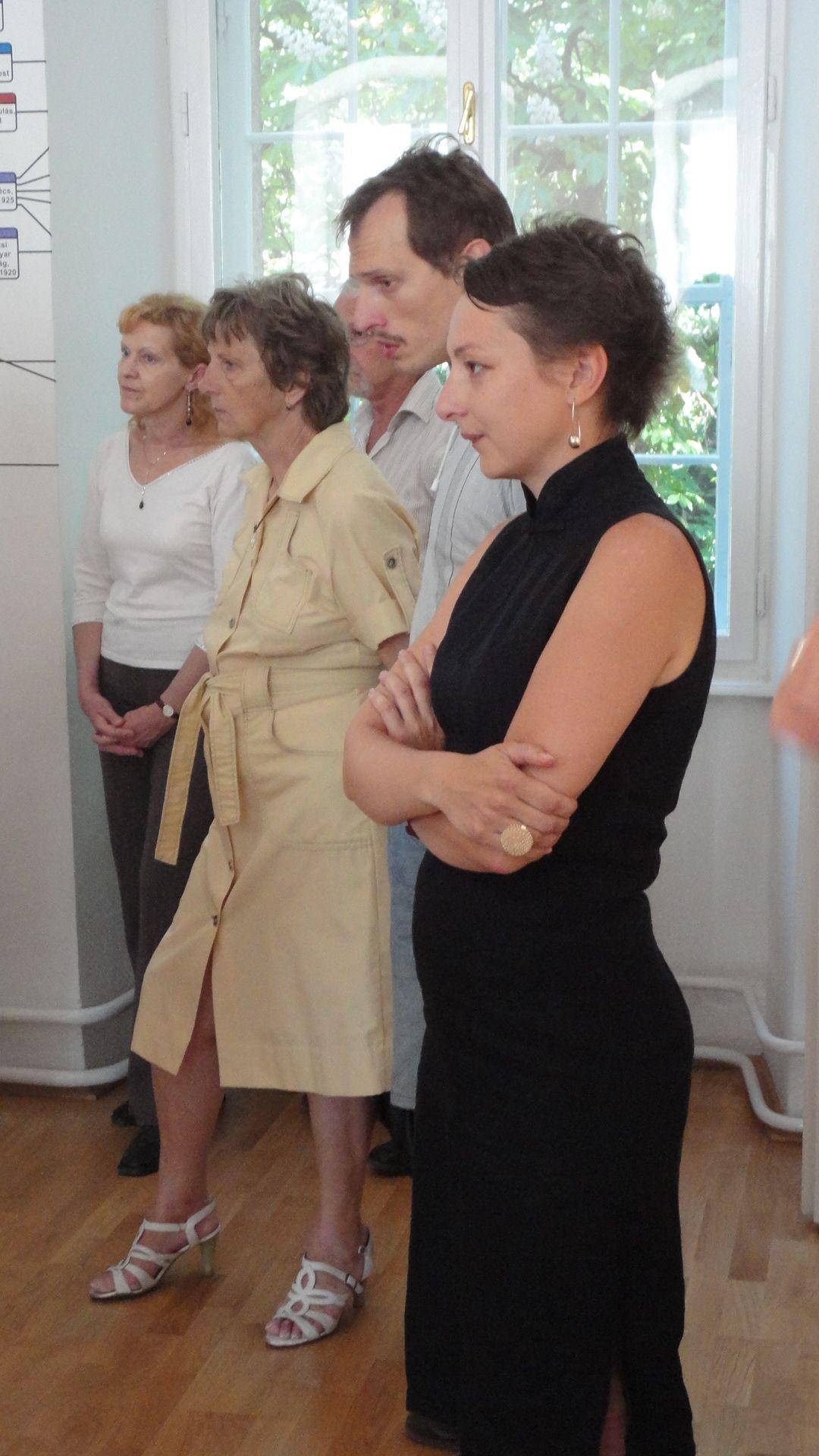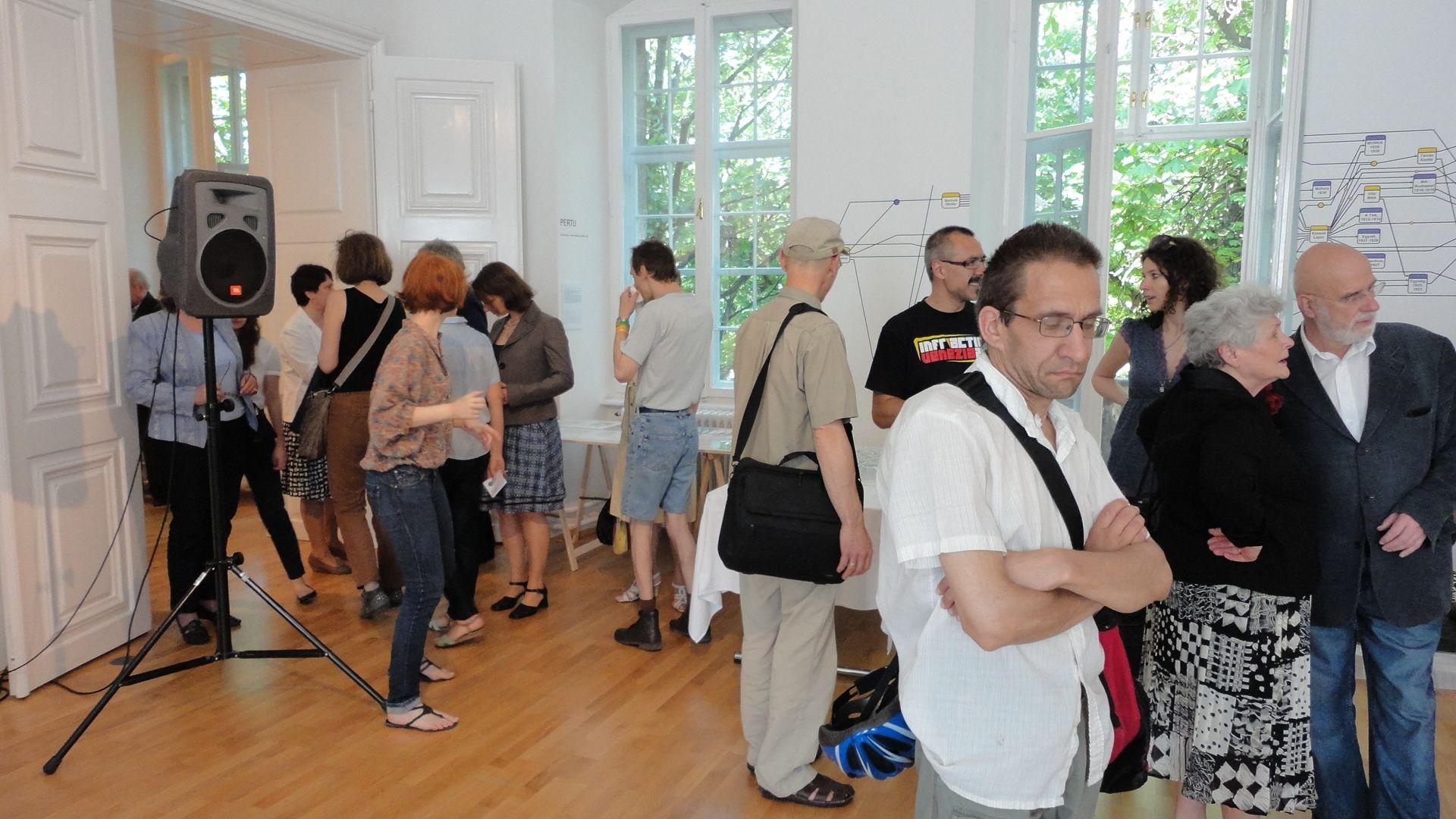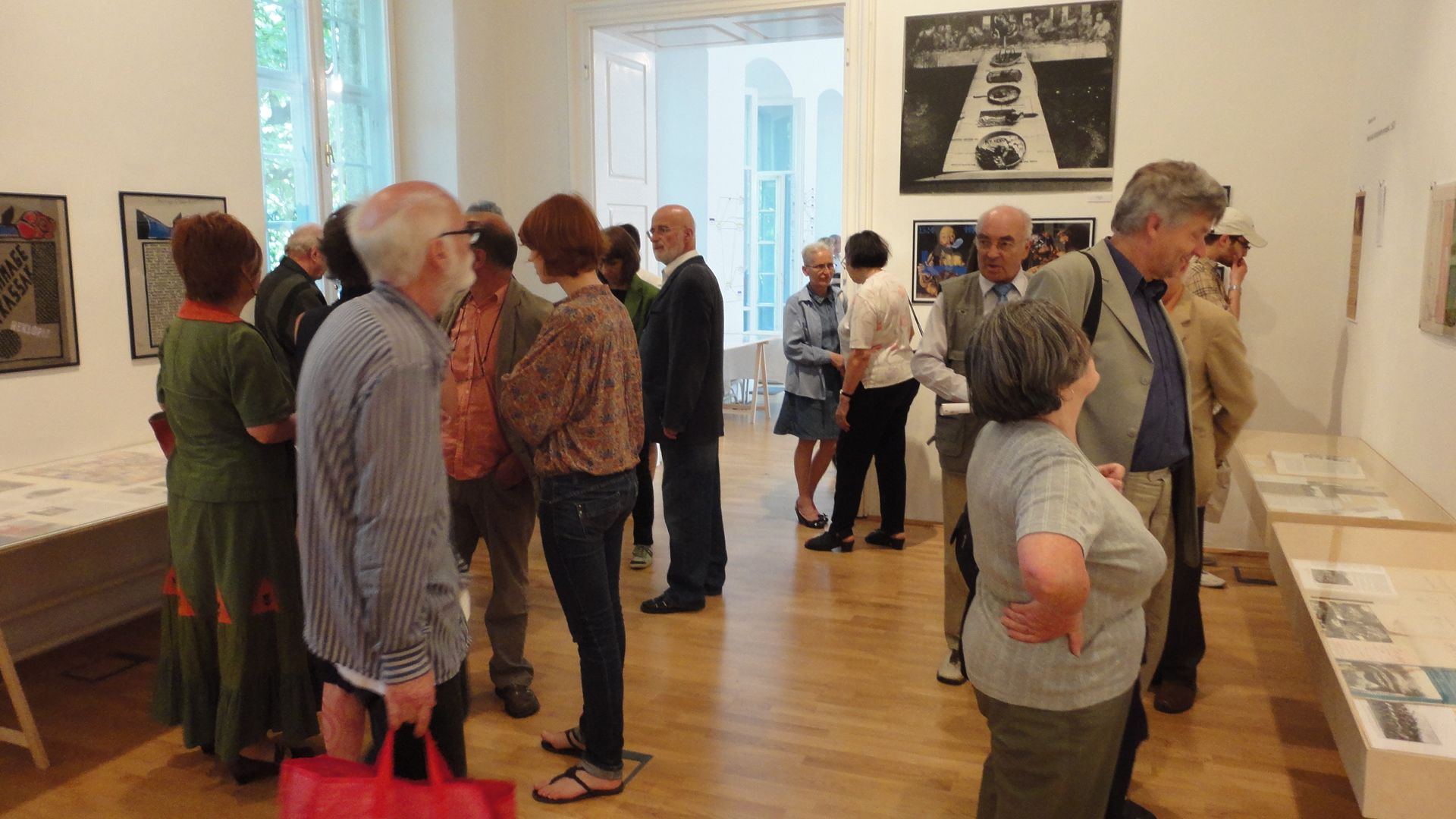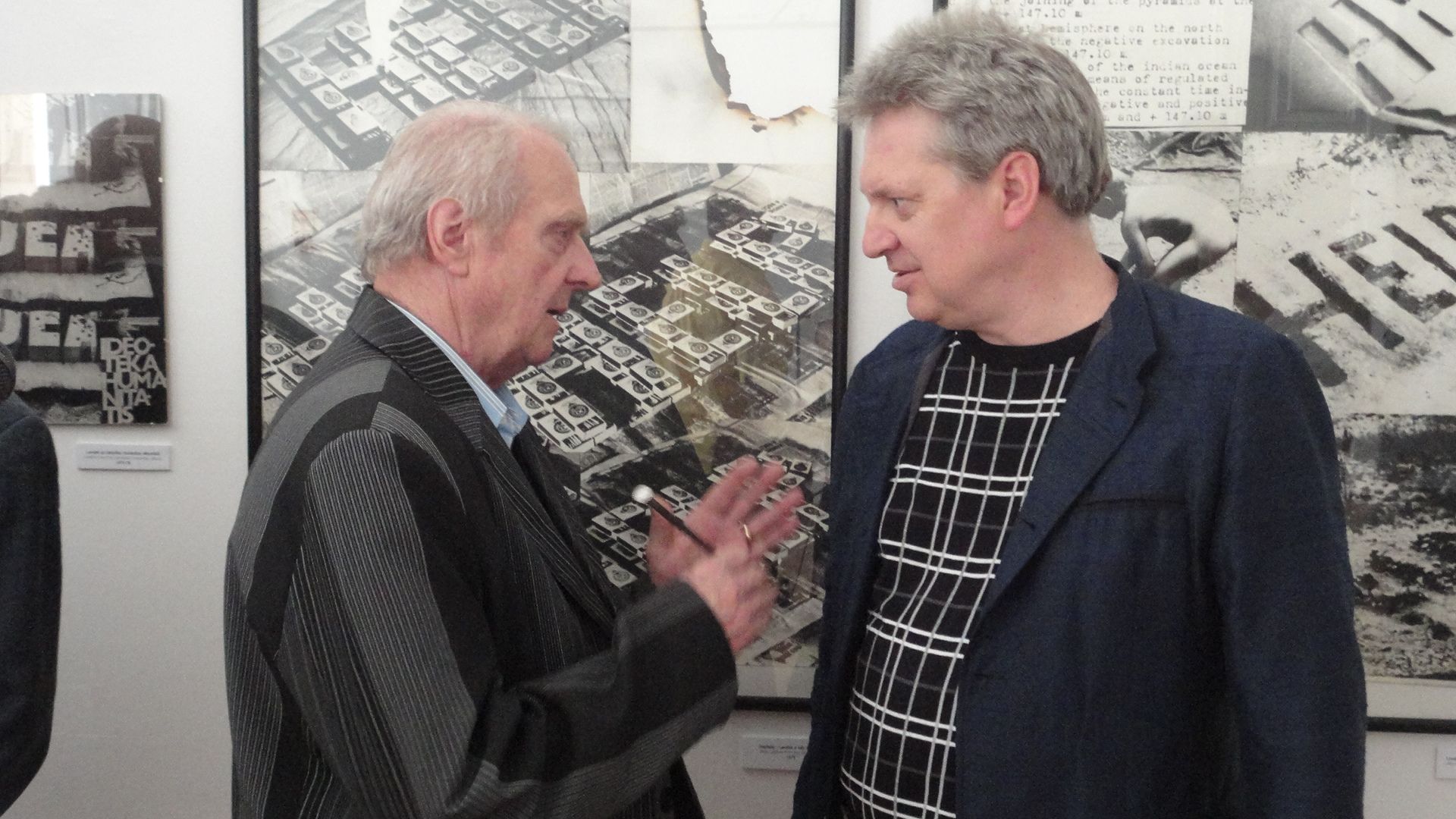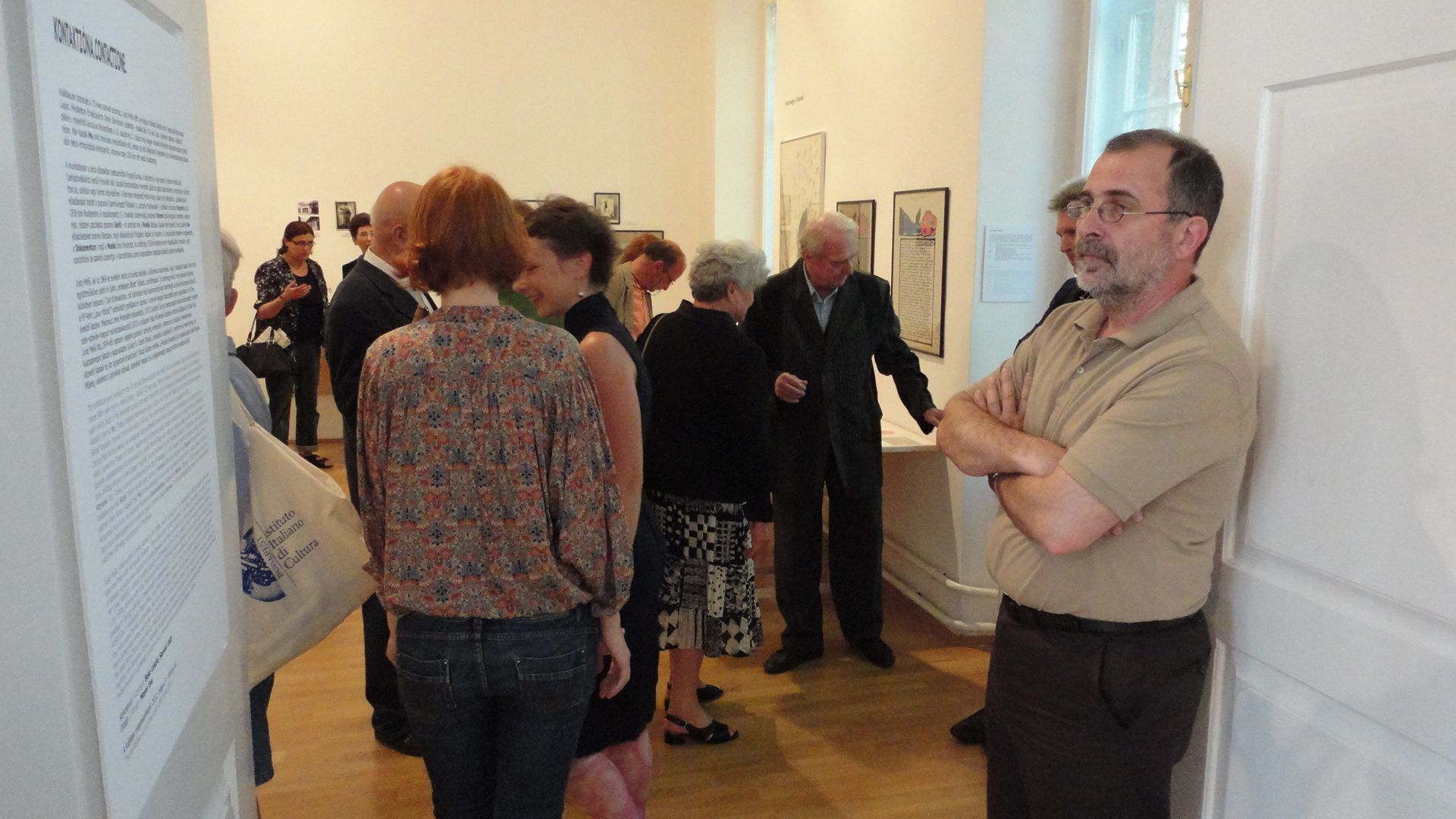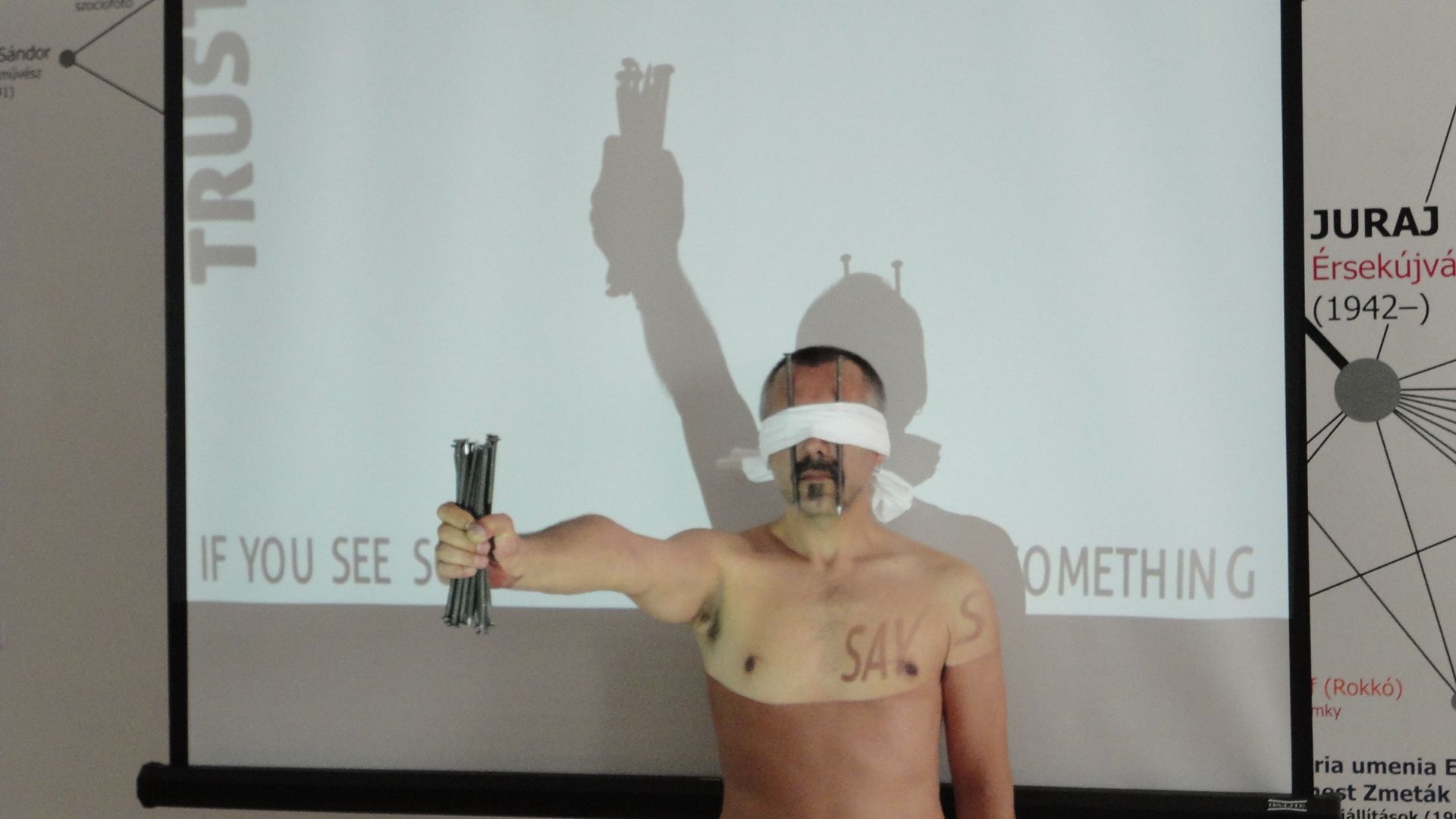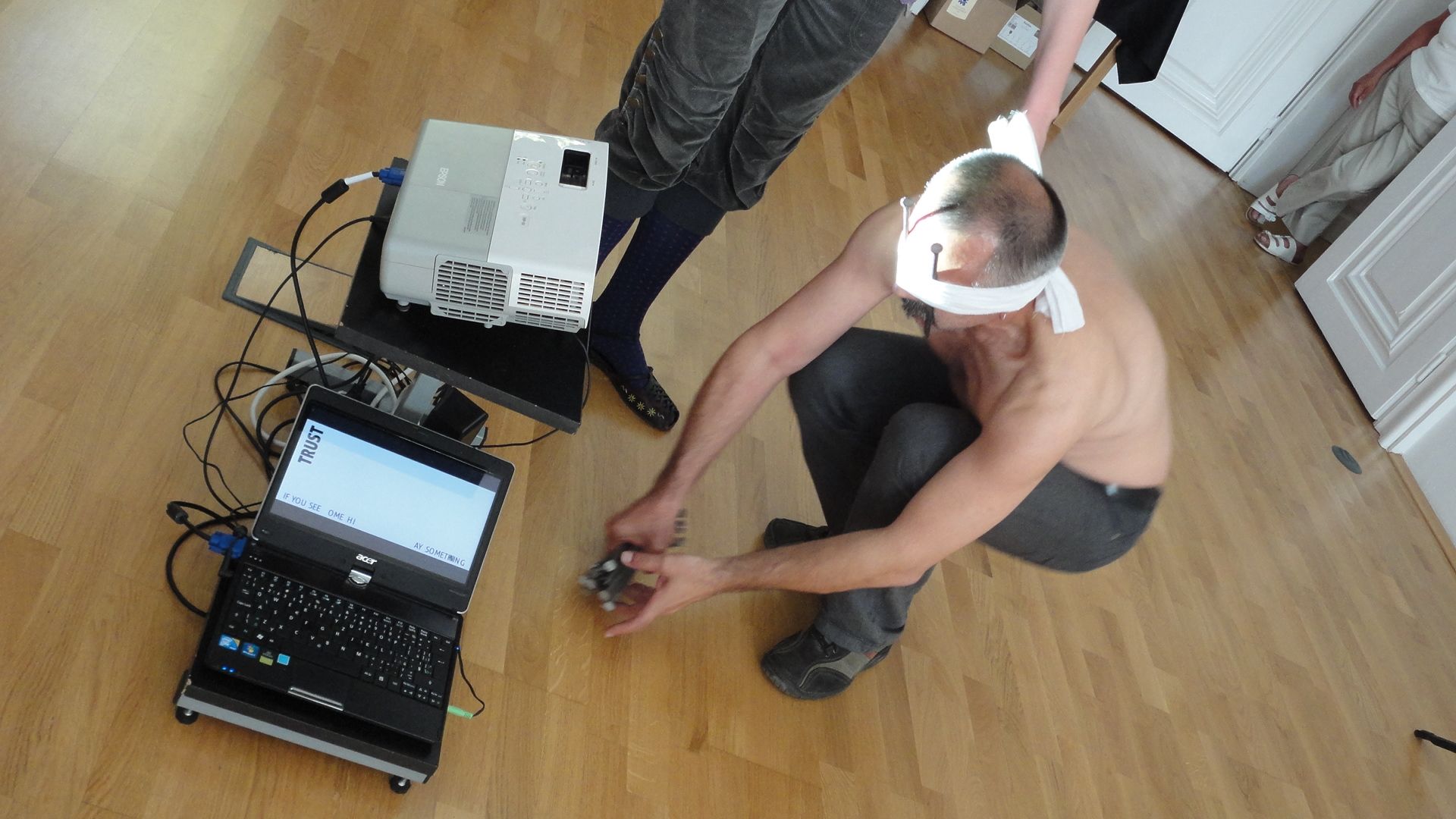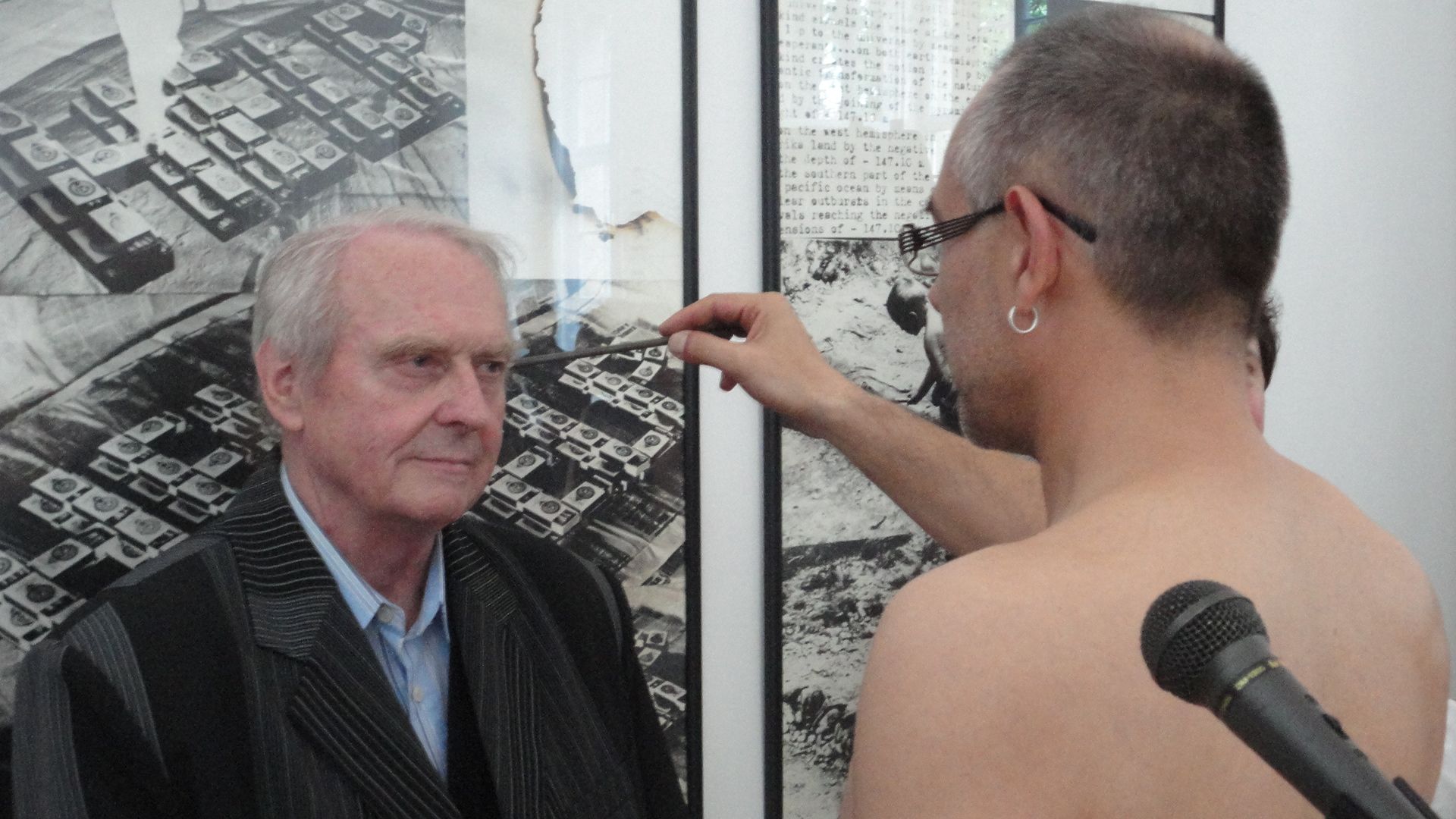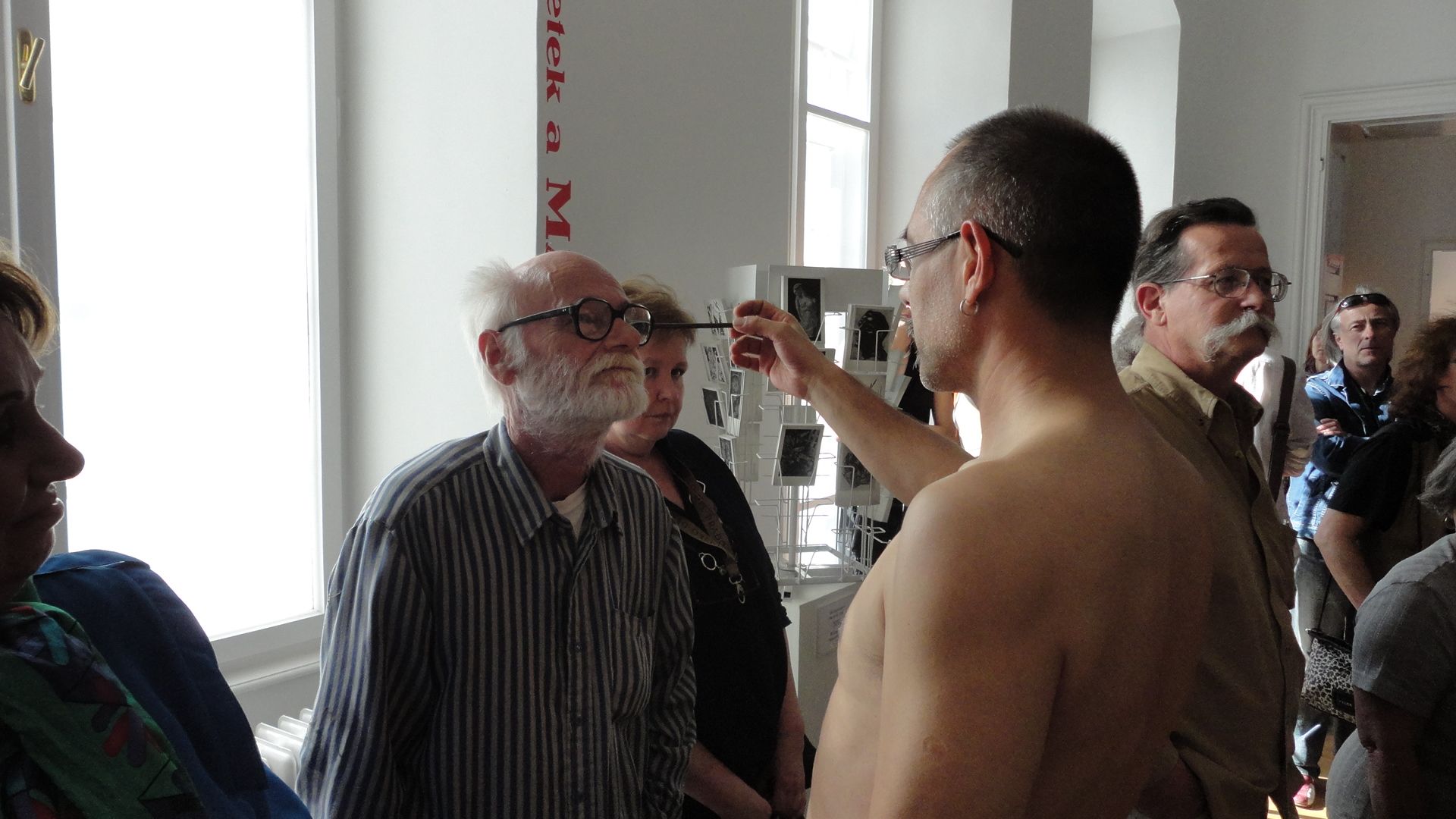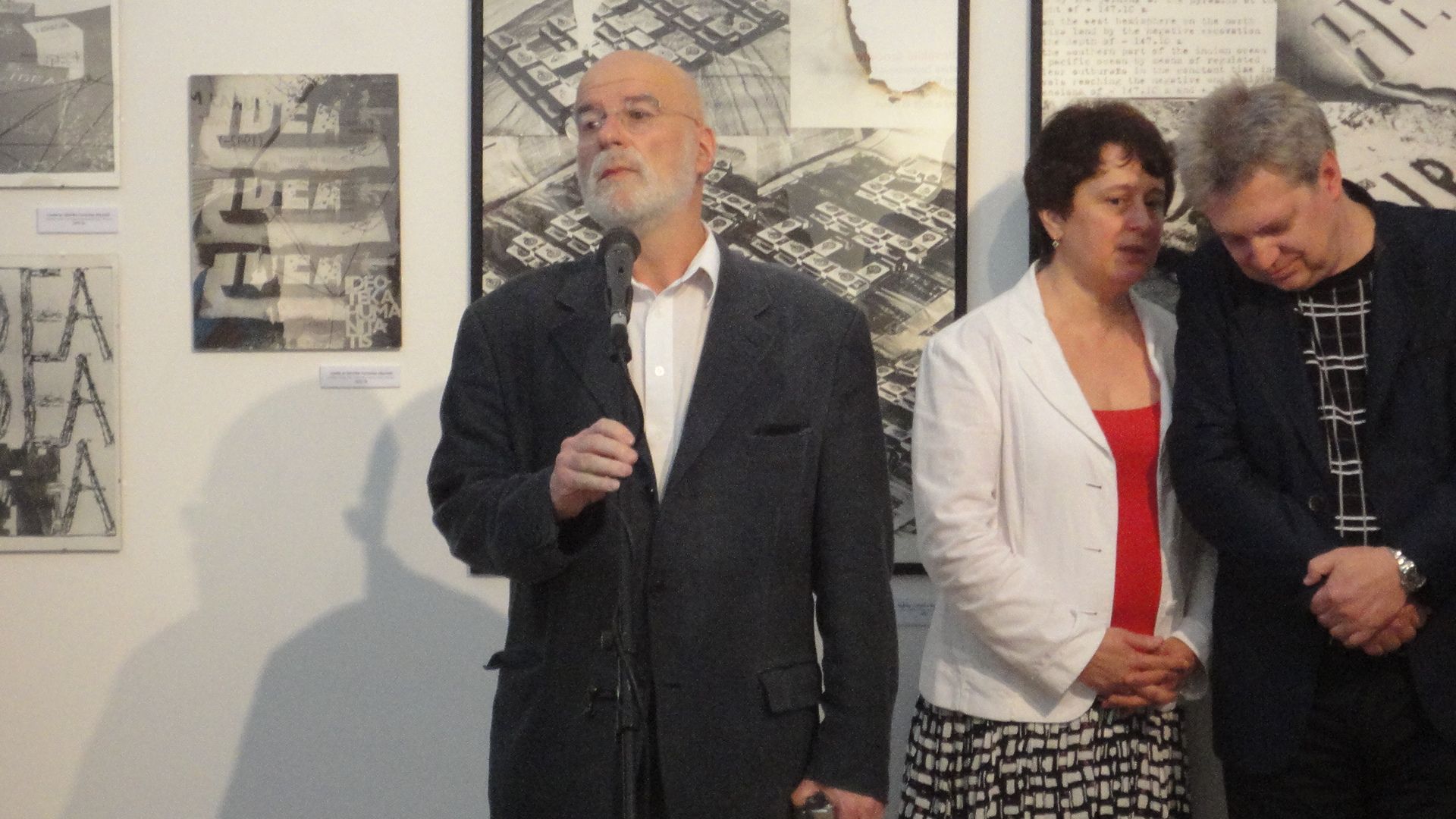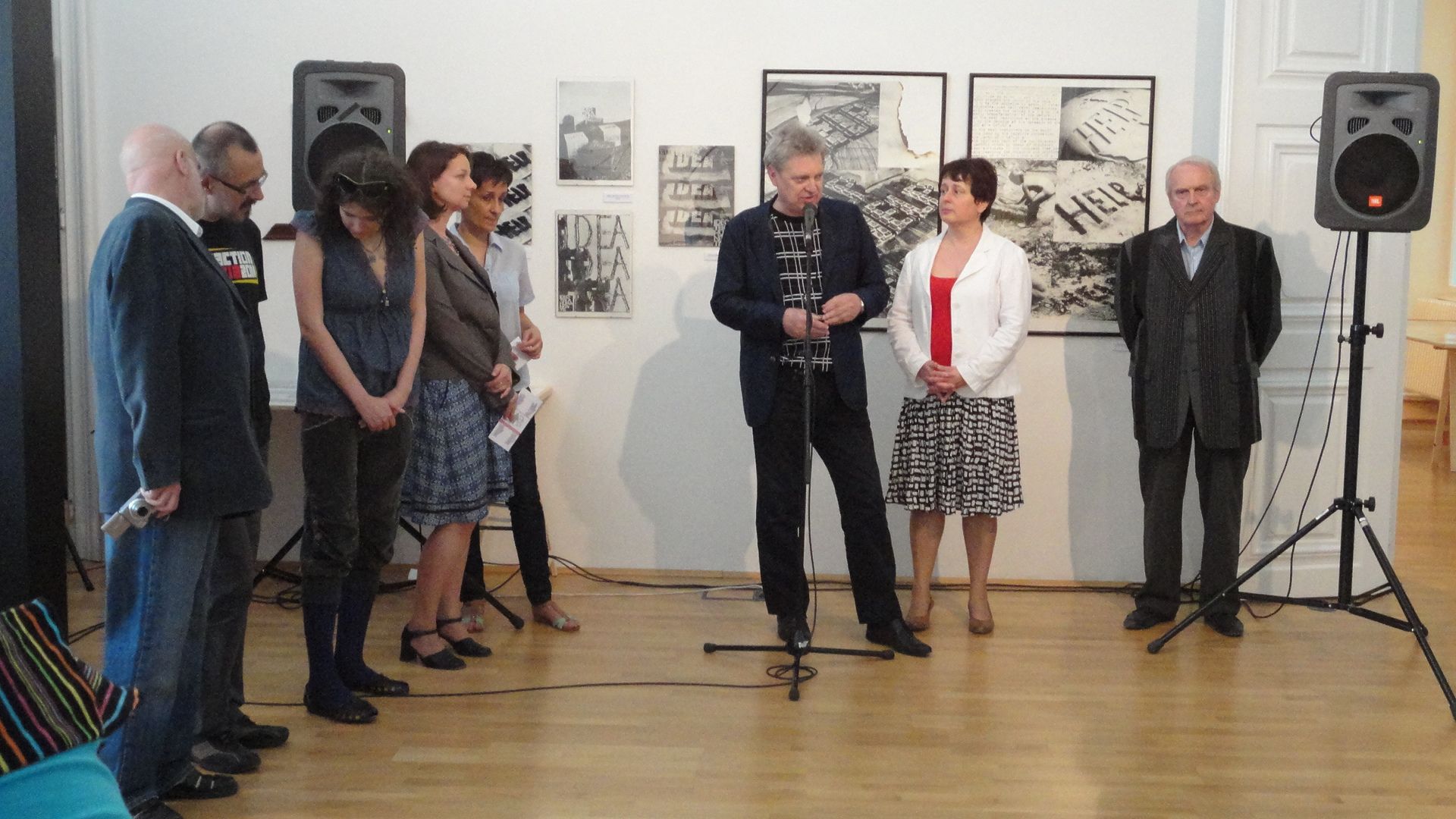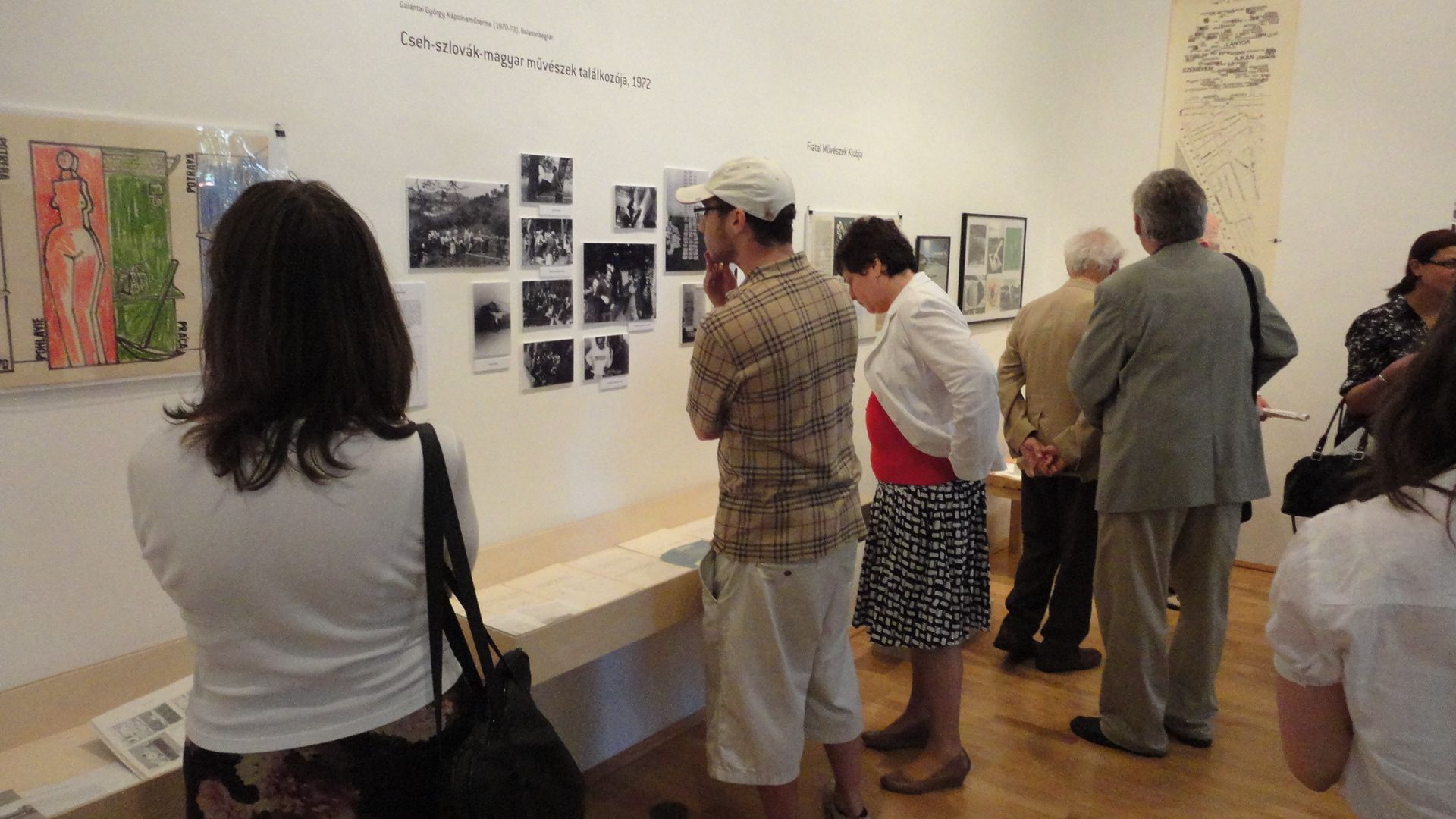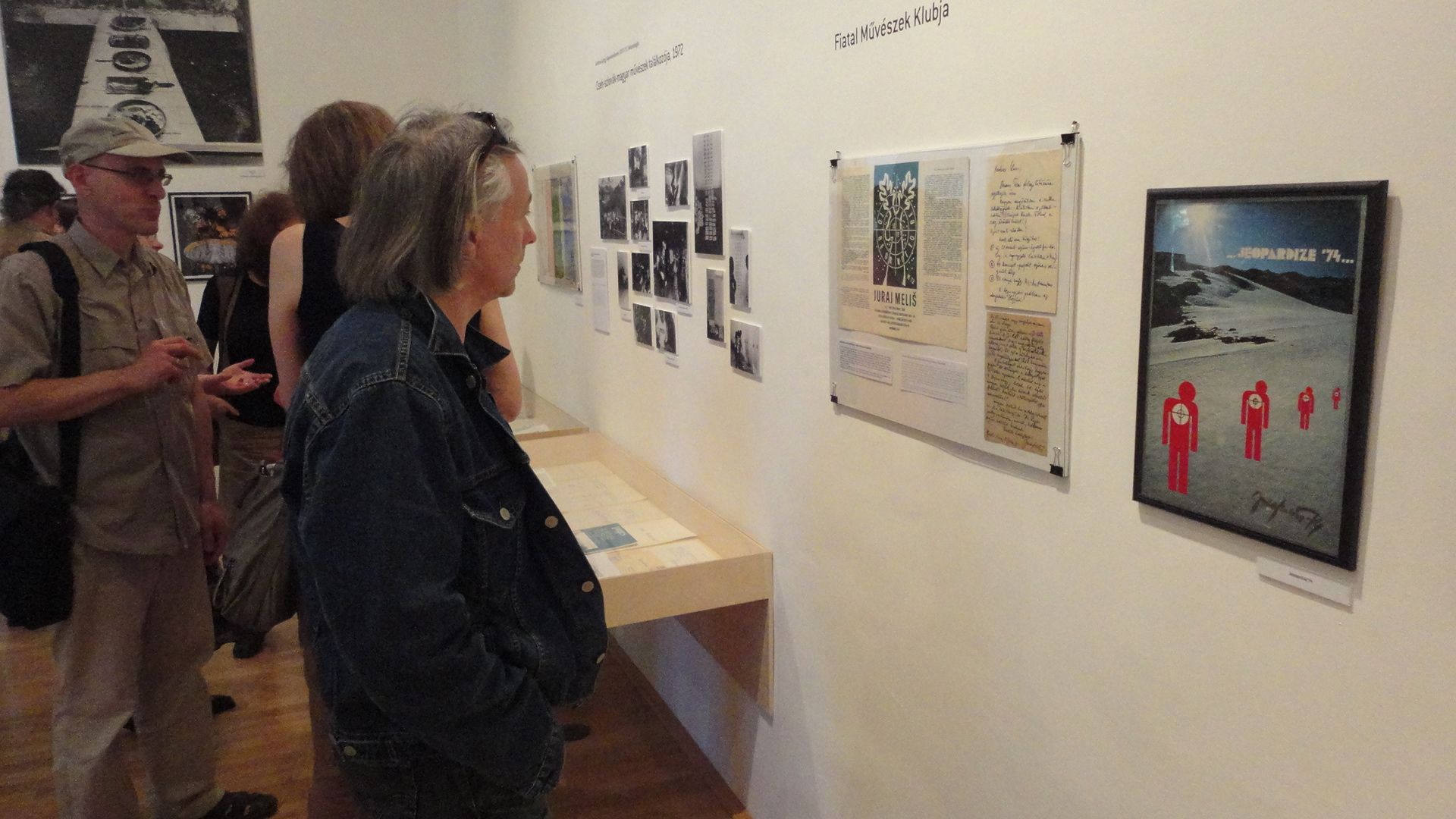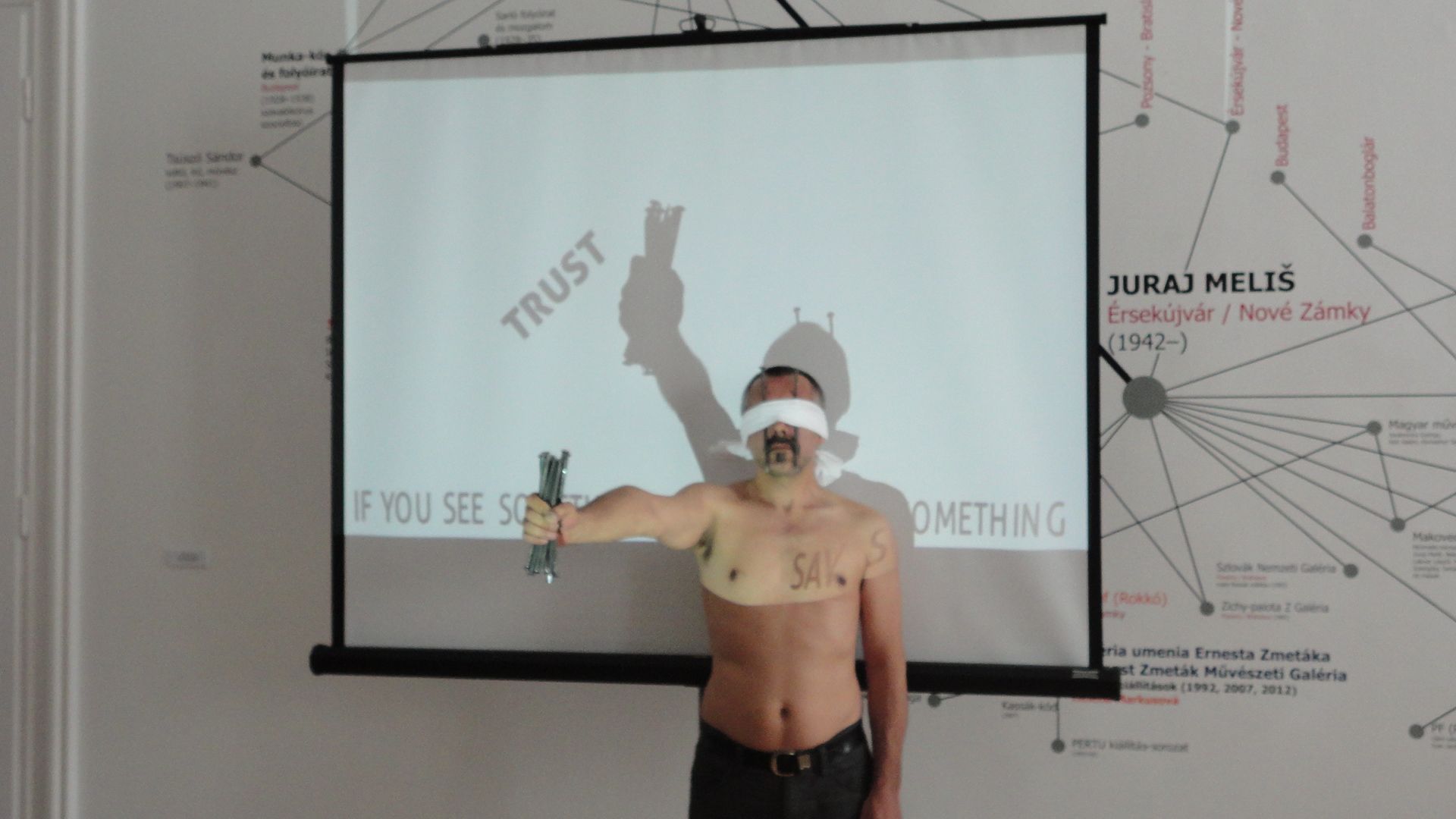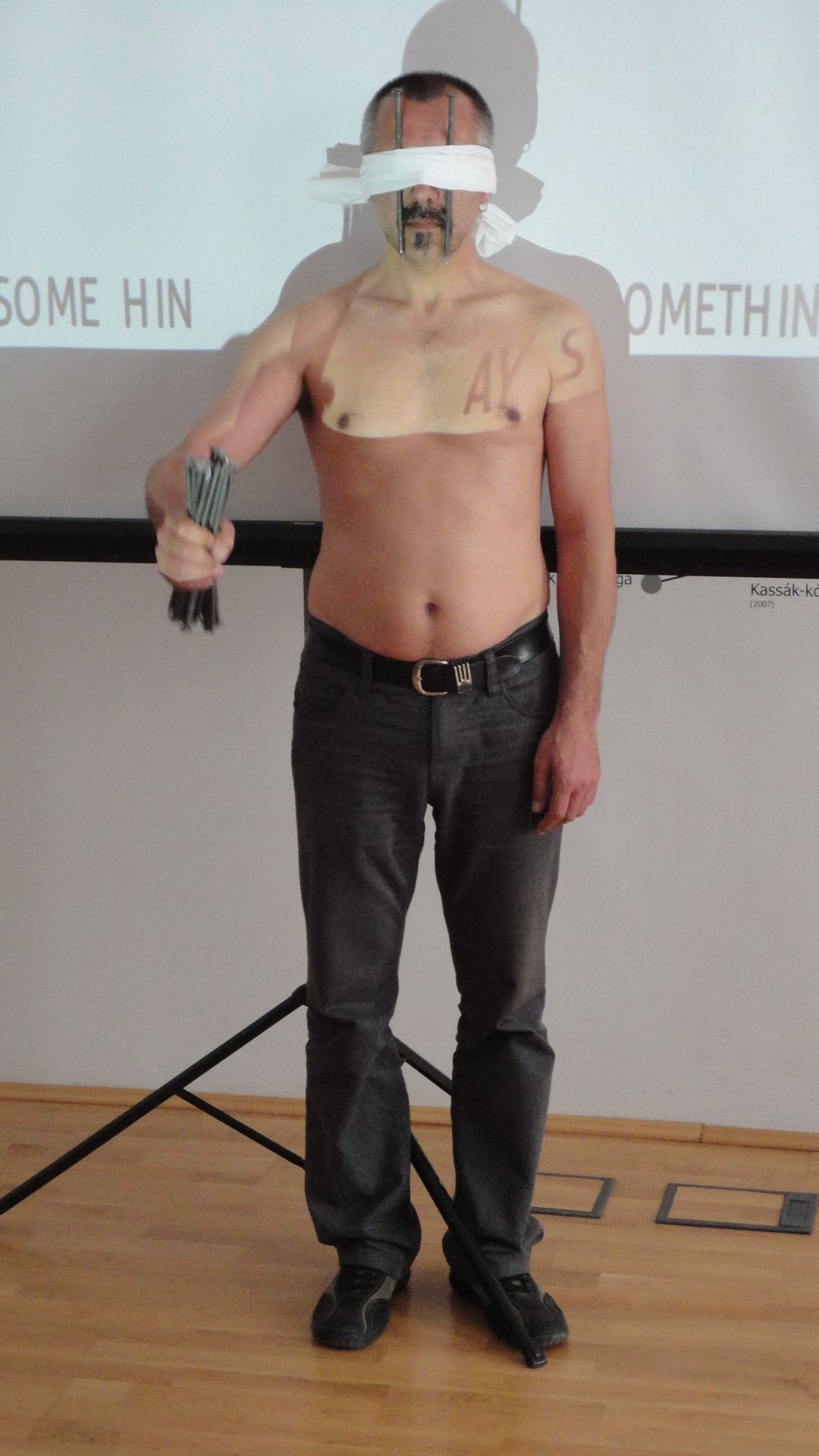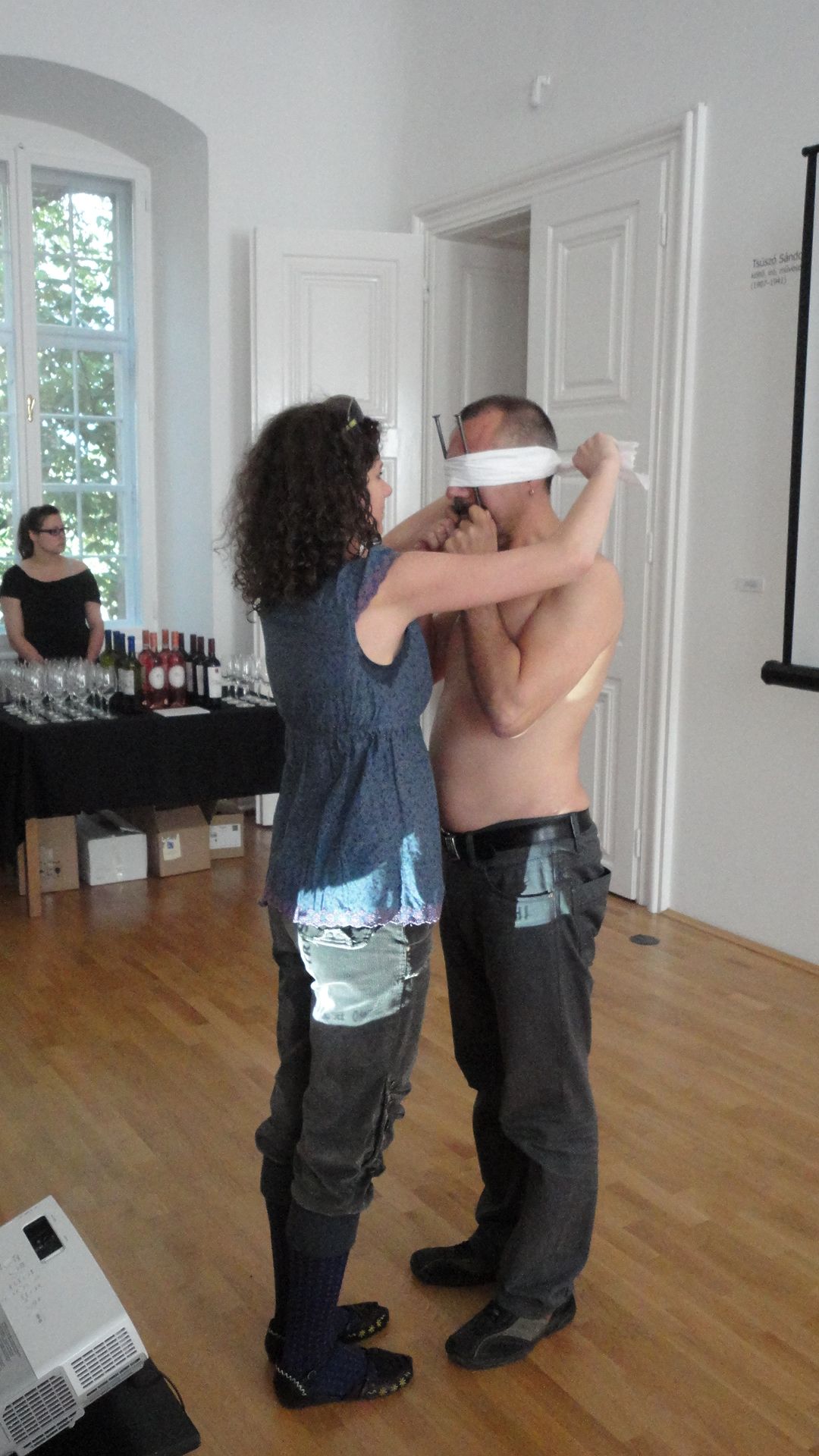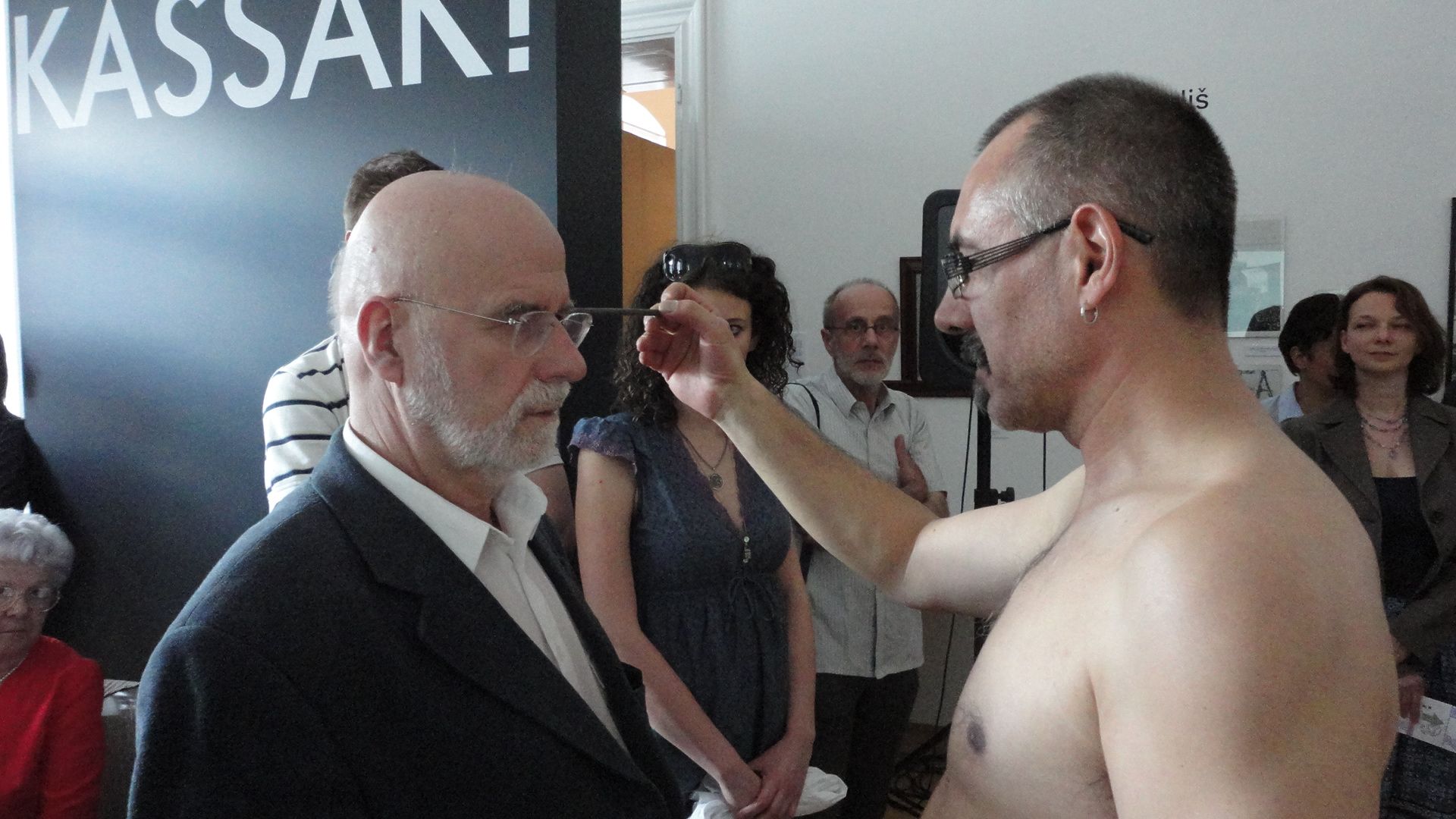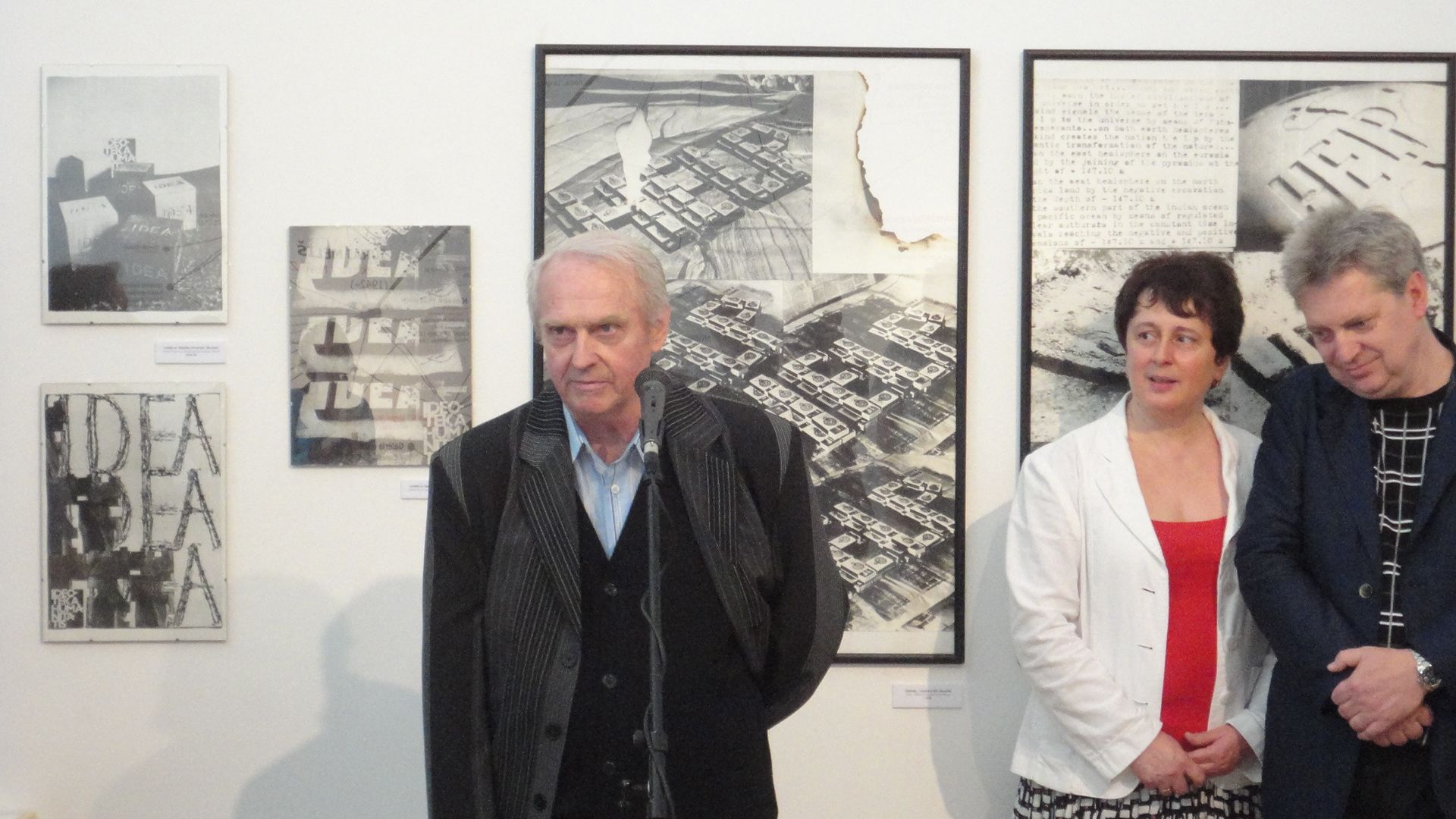Contactzone. Juraj Meliš and the Slovak-Hungarian Relations
The Petőfi Literary Museum - Kassák Museum cordially invites you to the opening of the exhibition titled
Contactzone. Juraj Meliš and the Slovak-Hungarian Relations
INFOGRAPHIC
Infuences, contacts, people and groups connecting Juraj Meliš and Lajos Kassák.
The exhibition is on view until 10 June 2012.
Juraj Meliš is one of the most original figures in recent Slovakian art, and most importantly for the Kassák Museum, he has had a central place in the revival and contemporary interpretation of the art and intellectual legacy of Lajos Kassák in his homeland, formerly Czechoslovakia and now the Slovak Republic. For one of his greatest ventures, starting in the Kassák centenary year of 1987, Kassák was the “pretext” by which, on several occasions, he addressed Czech and Slovak artists. His efforts attracted particular attention in the turbulent days of the Central European transition of the late 1980s. He has been instrumental in disseminating and gaining public acceptance of Kassák’s art in Slovakia, and has done so through the art of today, the living tradition. His efforts have borne fruit: the young Slovakian generation of artist who started their careers in the 1970s and 1980s discovered Kassák’s work for themselves.
This exhibition in the Kassák Museum marks Juraj Meliš’s 70th birthday, and Lajos Kassák’s 125th. We are taking the opportunity of this double anniversary and the activity of these artists to explore the diverse links between Hungarian and Slovakian art between the 1920s and the present day. The exhibition focuses on the links to Kassák and Meliš themselves, but also covers events in the years of socialism that drew together strands of unofficial Czech, Slovak and Hungarian art. These included Imre Makovecz’s 1972 project Minimal Environment, György Galántai’s meeting of Czech-Slovak and Hungarian artists in the Balatonboglár chapel-studio in 1972, the Hommage à Kassák exhibition held in the same place (1972), and the legendary exhibitions of the Budapest Young Artists’ Club (FMK). The exhibition also addresses post-transition events in Slovakia, including Helena Markusová’s Pertu series in Nové Zámky, presenting Hungarian-Slovak artist pairings.

